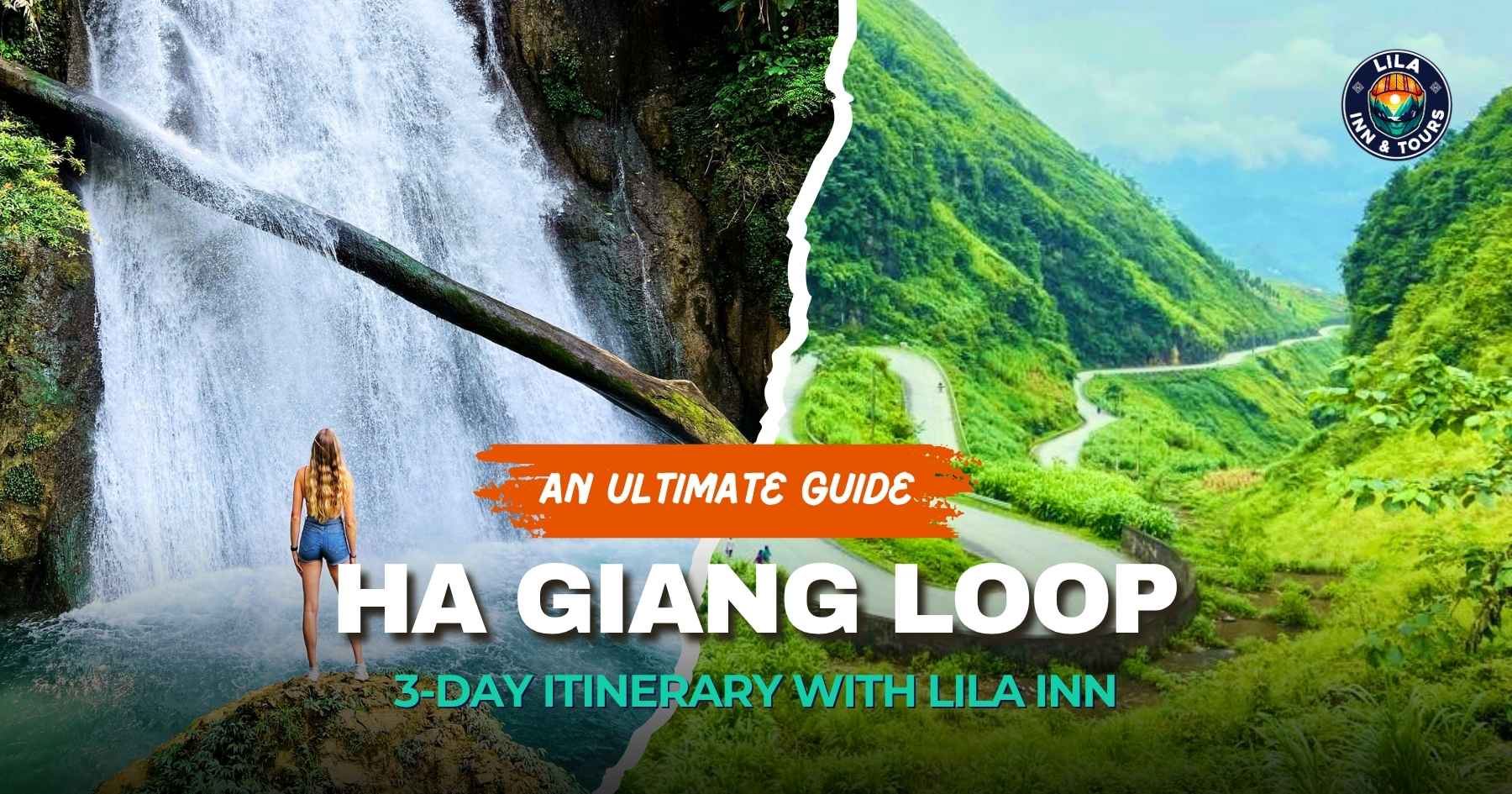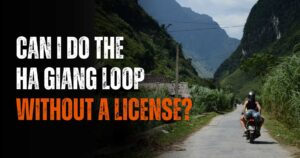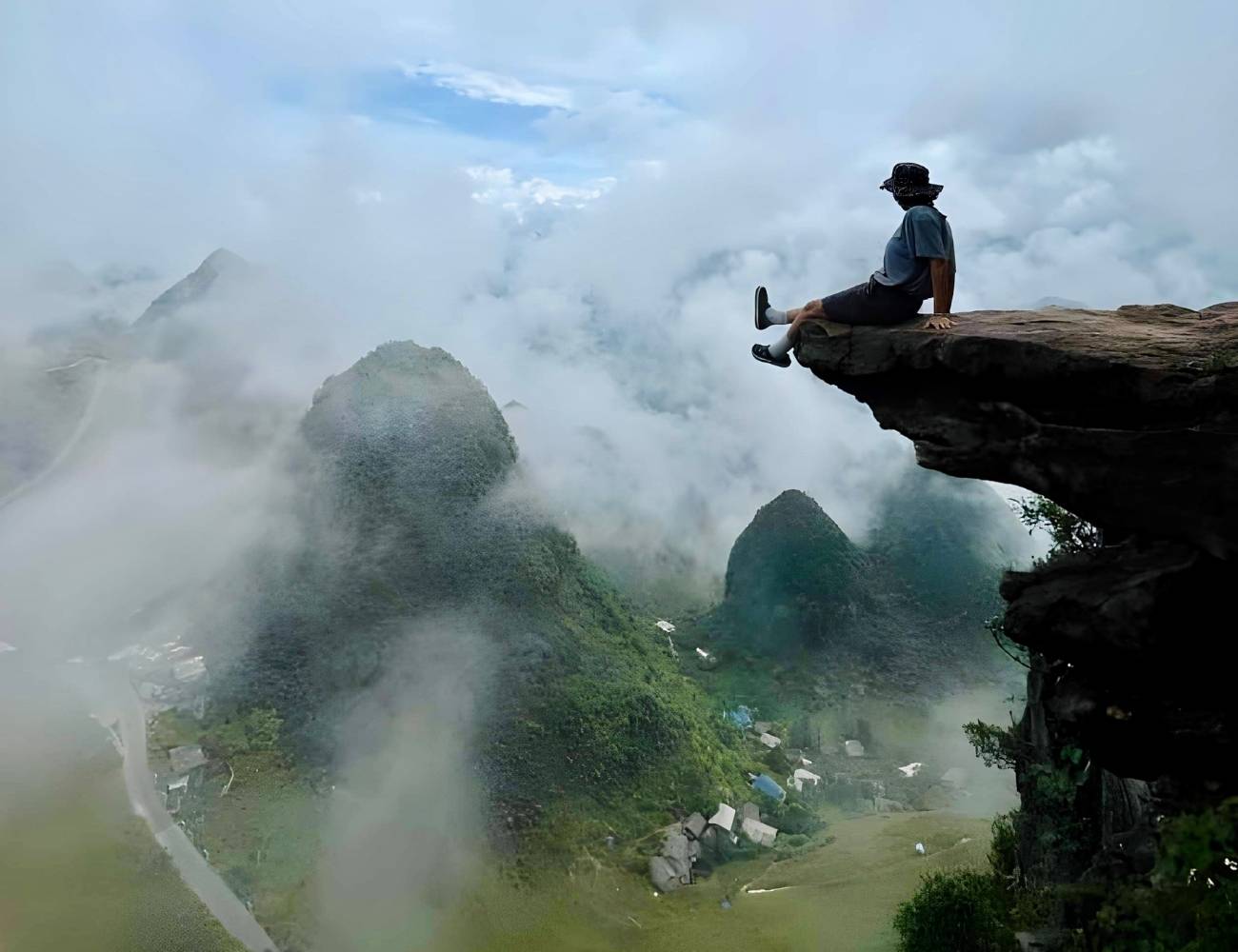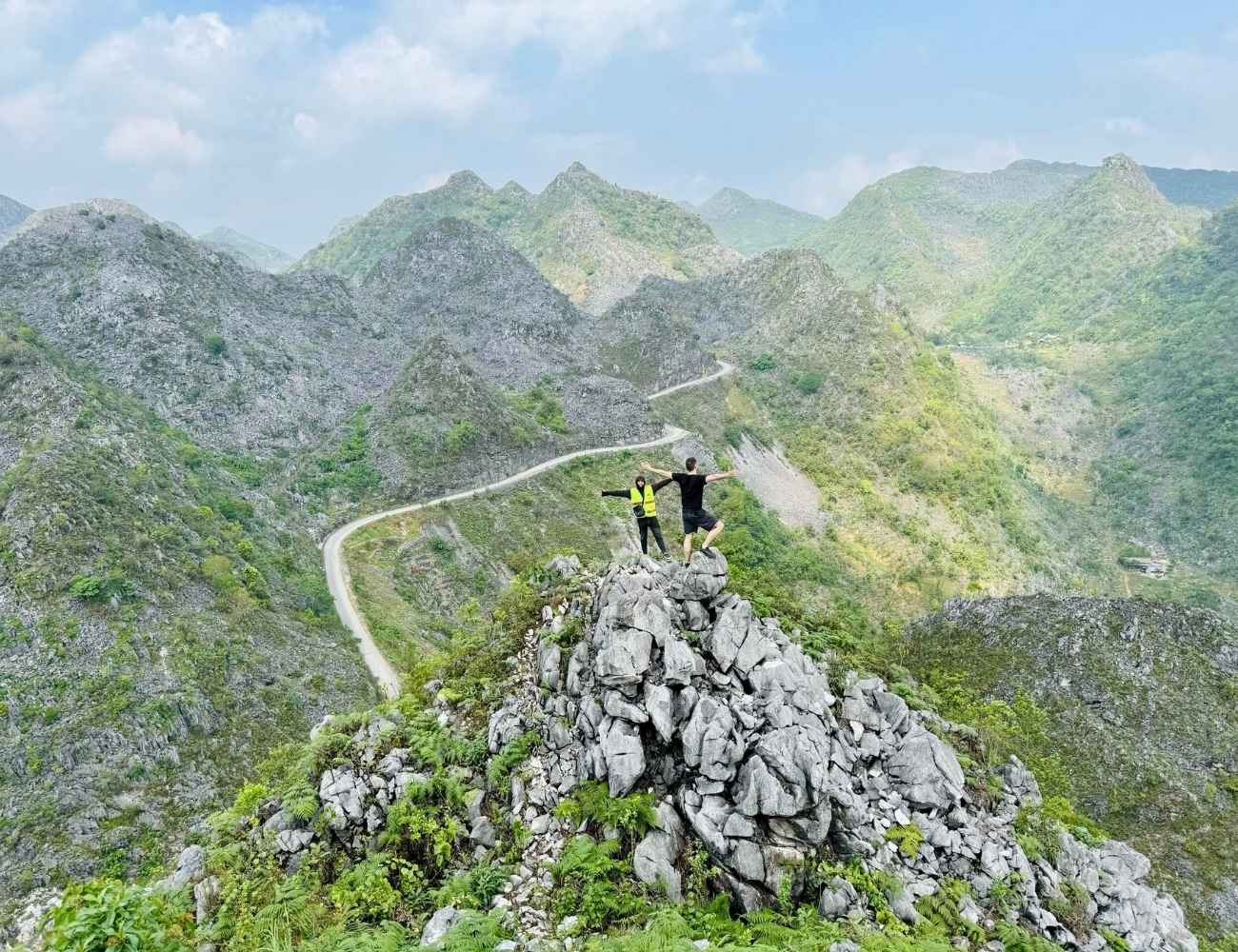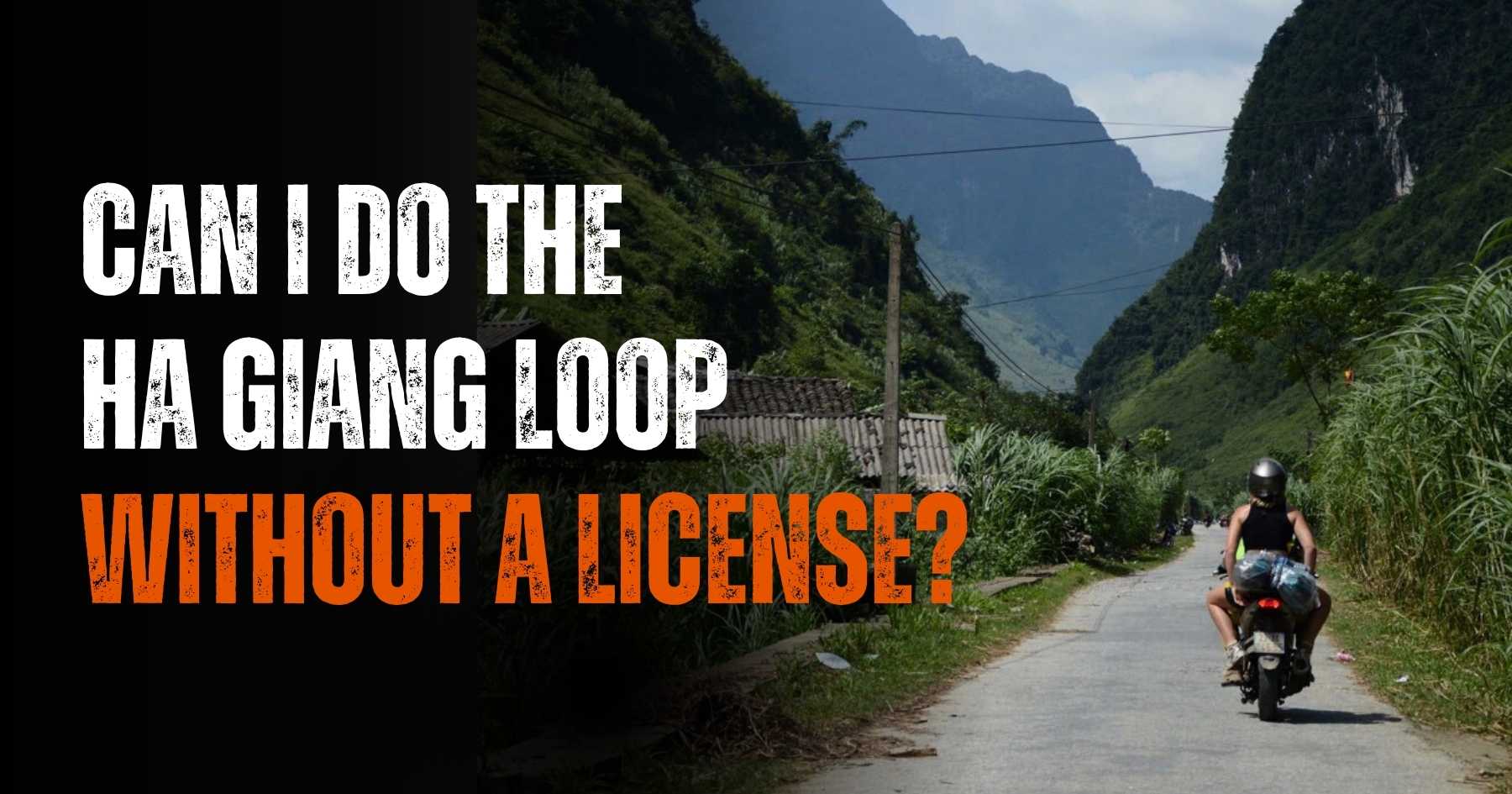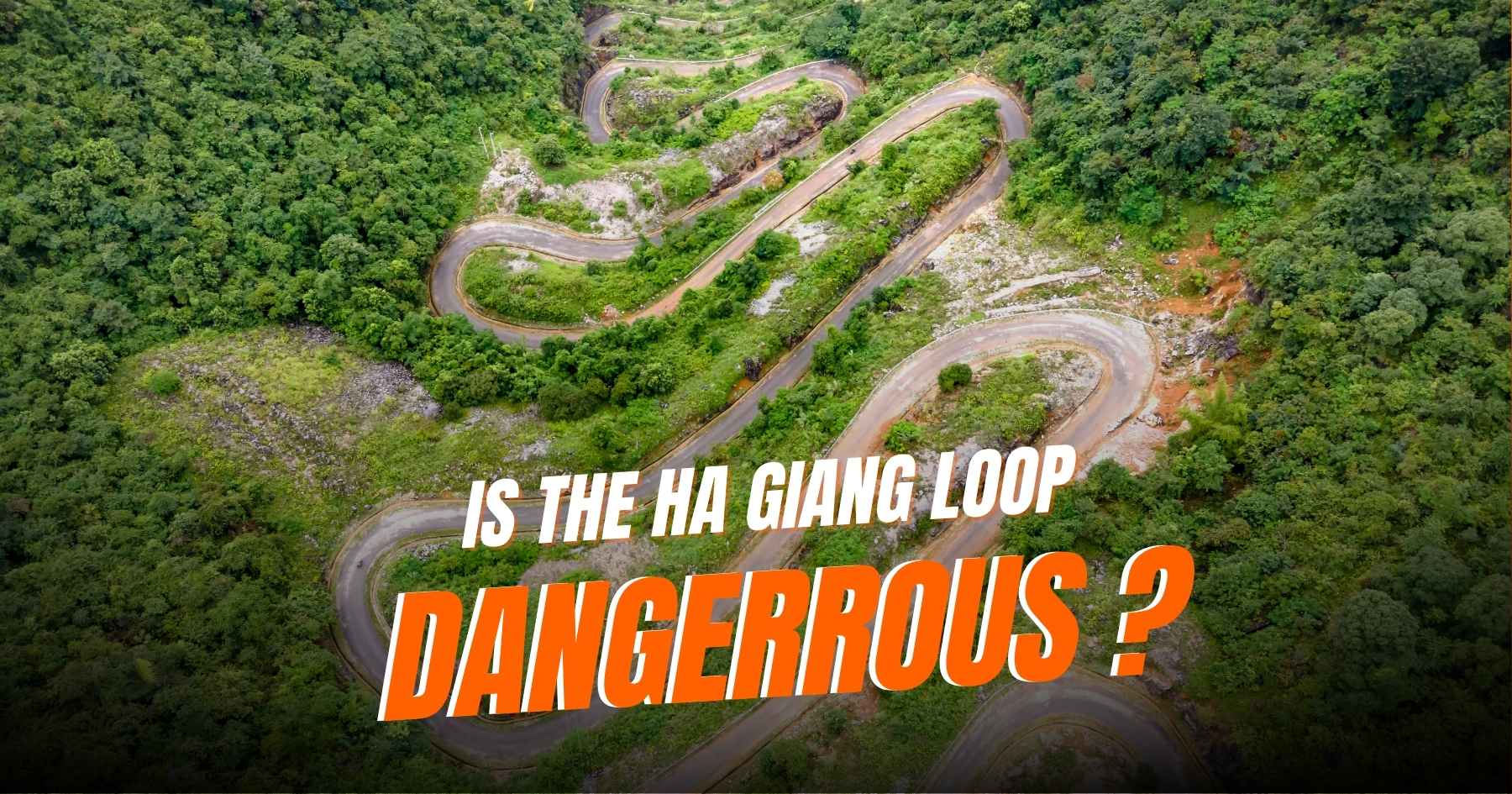The Ha Giang Loop is a circular route through the top highlights of Ha Giang province, the northernmost part of Vietnam.
Adventurers from all over the world keep saying the Ha Giang Loop is a must-try in Vietnam.
Ha Giang Loop is not just for its breathtaking mountain views and winding zigzag roads, but for the moments in between: eating traditional cuisine in a quiet village, hearing stories from local people, and discovering raw, untouched beauty you won’t find on the usual tourist trail.
If you´ve landed here, I bet that you have fallen in love with our Ha Giang Loop and now you’re planning for your trip, but don’t know how to start, right? You’re not alone.
As a local tour operator with 8 years of experience, Lila Inn & Tours will walk you through everything you need: detailed route maps, 3-day itineraries, insider safety tips, and the must-see stops along the way.
Whether you ride solo or hop on the back with our drivers, this guide will help you get ready for an unforgettable journey in Ha Giang.
Quick Summary
Don’t have lots of time! No worries.
Here is a quick summary for you to plan your trip. Choose the sections that matter most for your needs.
- What is Ha Giang Loop?: A famous circular route through Vietnam’s northernmost province, offering epic views, remote villages, and thrilling mountain passes. See the detailed route map.
- Best time to visit: Every season in Ha Giang has its unique charm, but from September to April stands out for their pleasant weather and smooth road conditions.
- How many days? The most common itineraries for the Ha Giang Loop are 3 days and 2 nights (3D2N). However, the loop can also be done in 2 days for those on a tight schedule, or extended to 4–7 days for a deeper experience (combining Ha Giang Loop and Cao Bang). See the full Lila Tour
- Guided tour or solo trip? The Easy Rider tour is the best choice for a stress-free journey, while self-riding is better suited for those with a Valid International Driving license and strong confidence in handling challenging roads. Learn more about the Easy Rider tour.
- How much does it cost? The cost typically ranges from $152 to $164 for a 3-day, 2-night Easy Rider tour, while self-driving for the same duration may range from $120 to $196, depending on the selected motorbike and room types.
- Road condition: The roads on the Ha Giang Loop are mostly well-built and travel-friendly, but the countless sharp turns and winding mountain paths still require good riding skills and careful preparation.
- Practical tips: Pack light but smart, always check the weather before your ride, and never forget to wear proper protective gears. These are the top tips to keep in mind for a safe and smooth Ha Giang Loop adventure.
What is the Ha Giang loop?
The Ha Giang Loop is a circular travel route that is located entirely in Ha Giang province, the northernmost part of Vietnam. It starts and ends in Ha Giang City, taking you through stunning roads, high limestone mountains, winding passes, deep valleys, and villages of ethnic minorities. Since the journey begins and finishes at the same point, many travelers call it the “Ha Giang Loop”.
Lila knows it seems hard for you to imagine the route. That’s why we created a Ha Giang Loop map that provides you with a clear overview of how the loop goes.
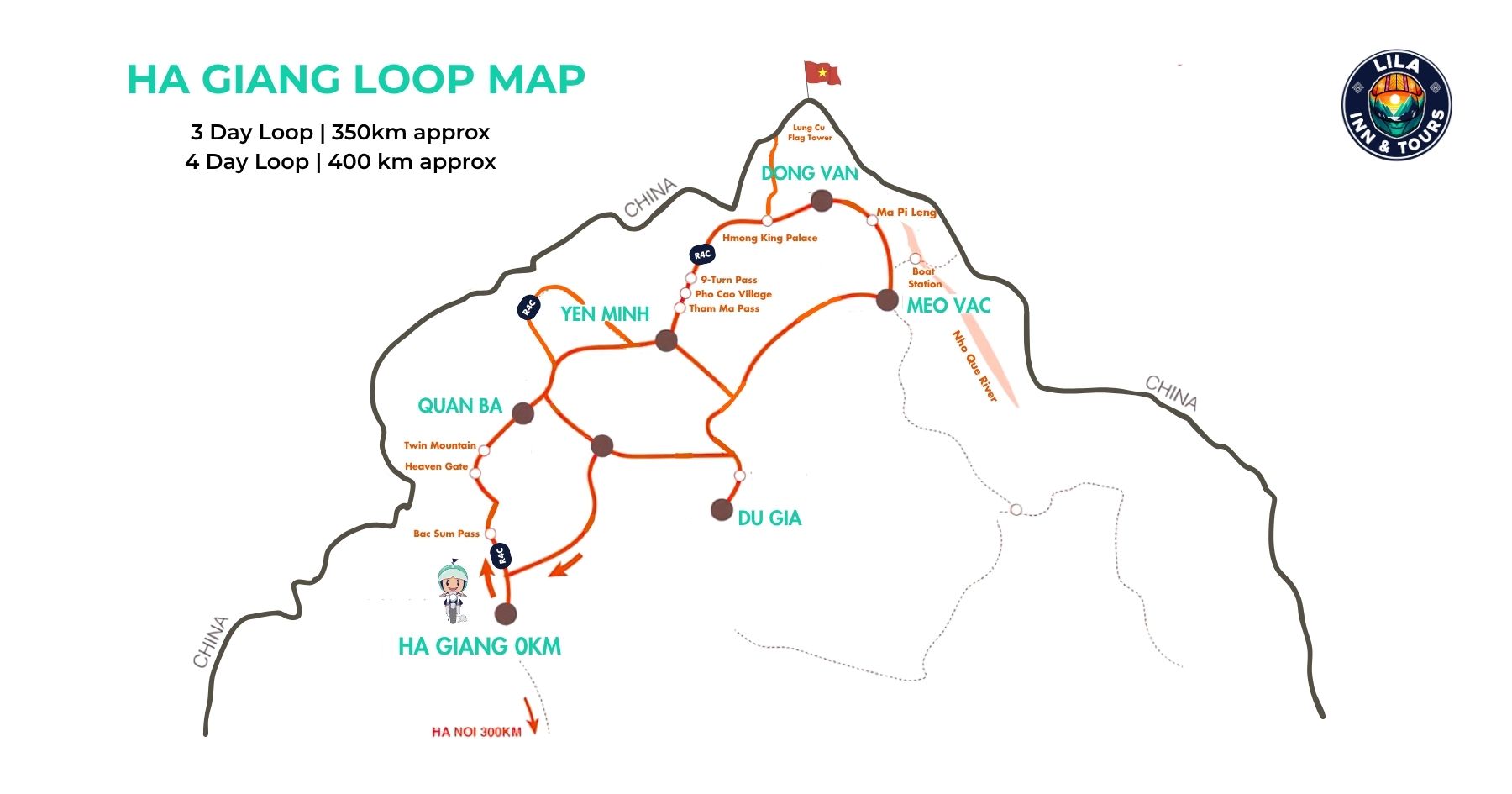
For a closer look at what to expect along the way, check out the full Ha Giang Loop Map guide.
The most common Ha Giang Loop route starts from Ha Giang City and goes through the districts of Quan Ba, Yen Minh, Dong Van, and Meo Vac, before returning to Ha Giang City.
Sketching about 350 to 450 kilometers long, the journey typically takes 3 to 5 days to finish. However, you can adjust the itinerary depending on your time and interests.
Most of the route follows National Road 4C, a 185-kilometer stretch connecting Ha Giang City and Meo Vac. It’s also known as “The Happiness Road”, a name that tells its remarkable history. In the 1960s, more than 1,500 young people from 16 ethnic communities built this road within 11 months. It is used with nothing but simple tools and their bare hands.
After finishing National Road 4C in Meo Vac, you will follow smaller roads to return to Ha Giang City.
Along the way, you’ll pass through many of Ha Giang’s most iconic landscapes, like Quan Ba Heaven’s Gate, Fairy Twin Mountains, Nine Turn Pass, Dong Van Old Quarter, Ma Pi Leng Pass, Nho Que River…
Another fact for you is, the Ha Giang loop is located within the Dong Van Karst Plateau, which was designated as Vietnam’s first UNESCO Global Geopark in 2010.
Ha Giang Loop Summary
- Distance: 350-450 km
- Duration: 3-5 days
- Popular route: Ha Giang → Quan Ba → Yen Minh → Dong Van → Meo Vac → Ha Giang
- Main road: National Road 4C (QL4C) (or The Happiness Road) – 185 km
- Side roads: Smaller connecting routes: QL34, DT181, DT182, DT176…
Best time to visit the Ha Giang Loop
Ha Giang experiences all four seasons. Each offers its kind of beauty, from vibrant peach blossoms in spring to golden rice terraces glowing across the hills in autumn.
However, the best time to explore the Ha Giang Loop is from September to April, which is the dry season. During these months, the weather is fresh, cool, and pleasant, making the roads smoother and safer for long rides.
Otherwise, July to August marks the peak of the rainy season. Usually, it rains at night and clears up during the day, so you can still enjoy your trip.
However, it’s important to check the weather forecast regularly, as sudden showers can make the roads slippery and a bit harder to navigate. The landscapes are still breathtaking during this time, just be a little more mindful, and your journey will still be well worth it.
So, if you’re planning a trip to the Ha Giang loop, we highly recommend going between late September and early April, the ideal time to experience Ha Giang at its best.
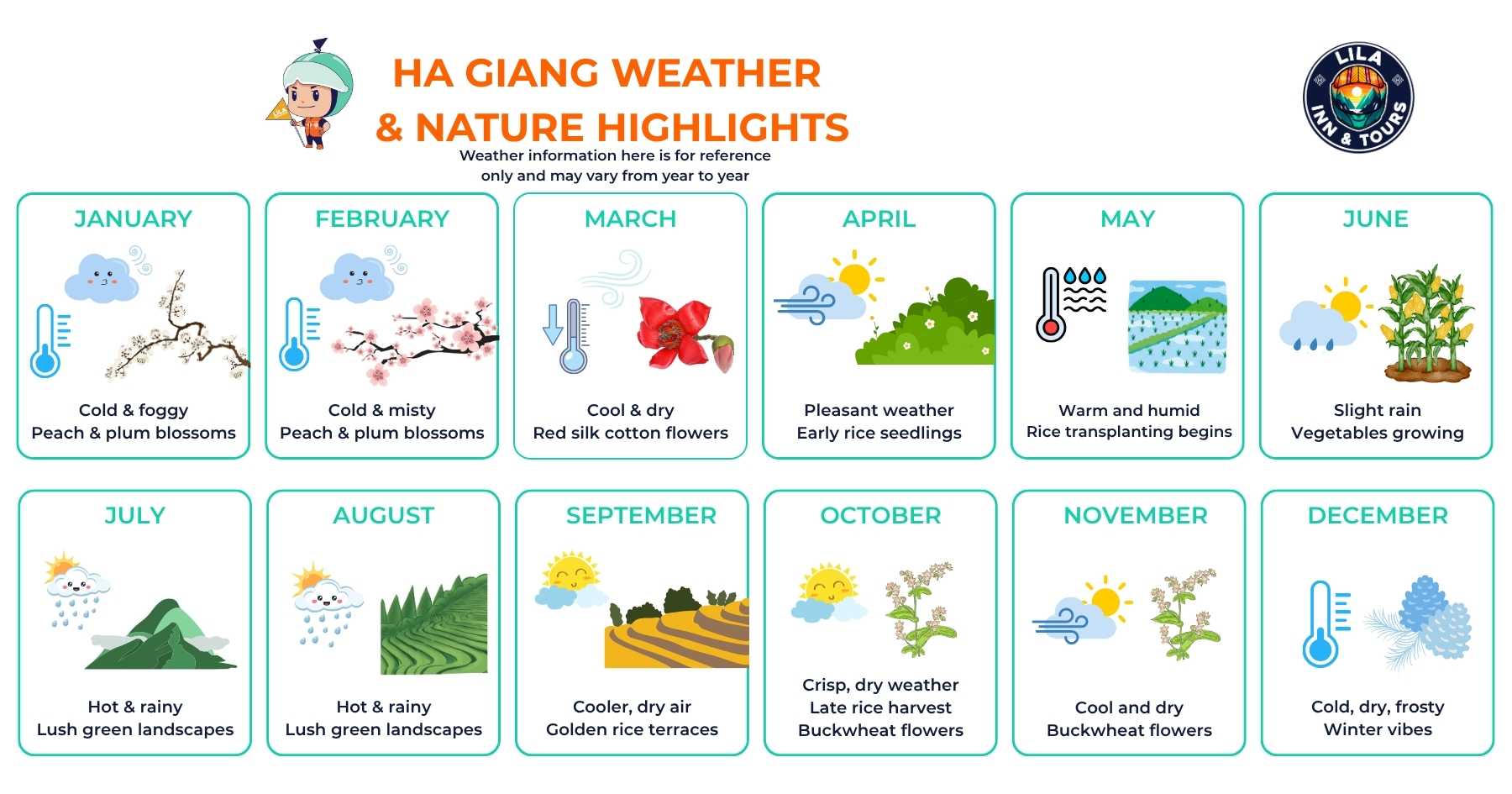
Let’s have a general look at the typical weather each season in Ha Giang:
- Spring (March–May)
Cool weather with average temperatures ranging from 18–25°C, red silk cotton flowers and early green rice fields.
- Summer (June–August)
Warmest season of the year (25–32°C), but fresh mountain air and breezes keep it pleasant. The rainy season brings sudden showers, making roads slippery, but hills become lush and vibrant.
- Autumn (September–November)
Cool, pleasant weather (15–28°C) and golden terraced rice fields make autumn the most stunning season to visit. Buckwheat flowers bloom in late autumn, adding a picturesque charm to the season.
- Winter (December–February)
Cold weather with temperatures from 8–18°C, even lower in the highlands, brings Ha Giang’s signature mountain chill. As buckwheat flowers fade, Tet approaches, offering a rare glimpse into vibrant ethnic traditions if you visit in late January or early February.
For a more detailed breakdown of each season, see our full guide: Best Time to Do the Ha Giang Loop.
How many days for Ha Giang Loop?
The most common itineraries for the Ha Giang Loop are 3 days and 2 nights (3D2N). In fact, the loop can also be done in 2 days for those on a tight schedule, or extended to 4–7 days for a deeper experience.
If you’re looking for a perfect balance of adventure, comfort, and a reasonable budget, the 3D2N itinerary will be our best recommendation for you. Here’s a closer look at a signature 3-day Ha Giang Loop tour of Lila.
Day 1: Ha Giang City – Quan Ba – Yen Minh
Quick Summary:
- Starts: 8:00 AM at Ha Giang City
- Ends: 4:30 PM at Yen Minh District
- Total distance: around 110 km
- Highlight stops: Bac Sum Pass, Khau Lan Waterfall, Quan Ba Heaven Gate, Nam Dam Village, Linen Weaving Village, Can Ty Viewpoint, Lao Va Chai.
The Ha Giang Loop adventure kicks off at 8:00 AM from Ha Giang City, after travellers have breakfast and check on the motorbikes.
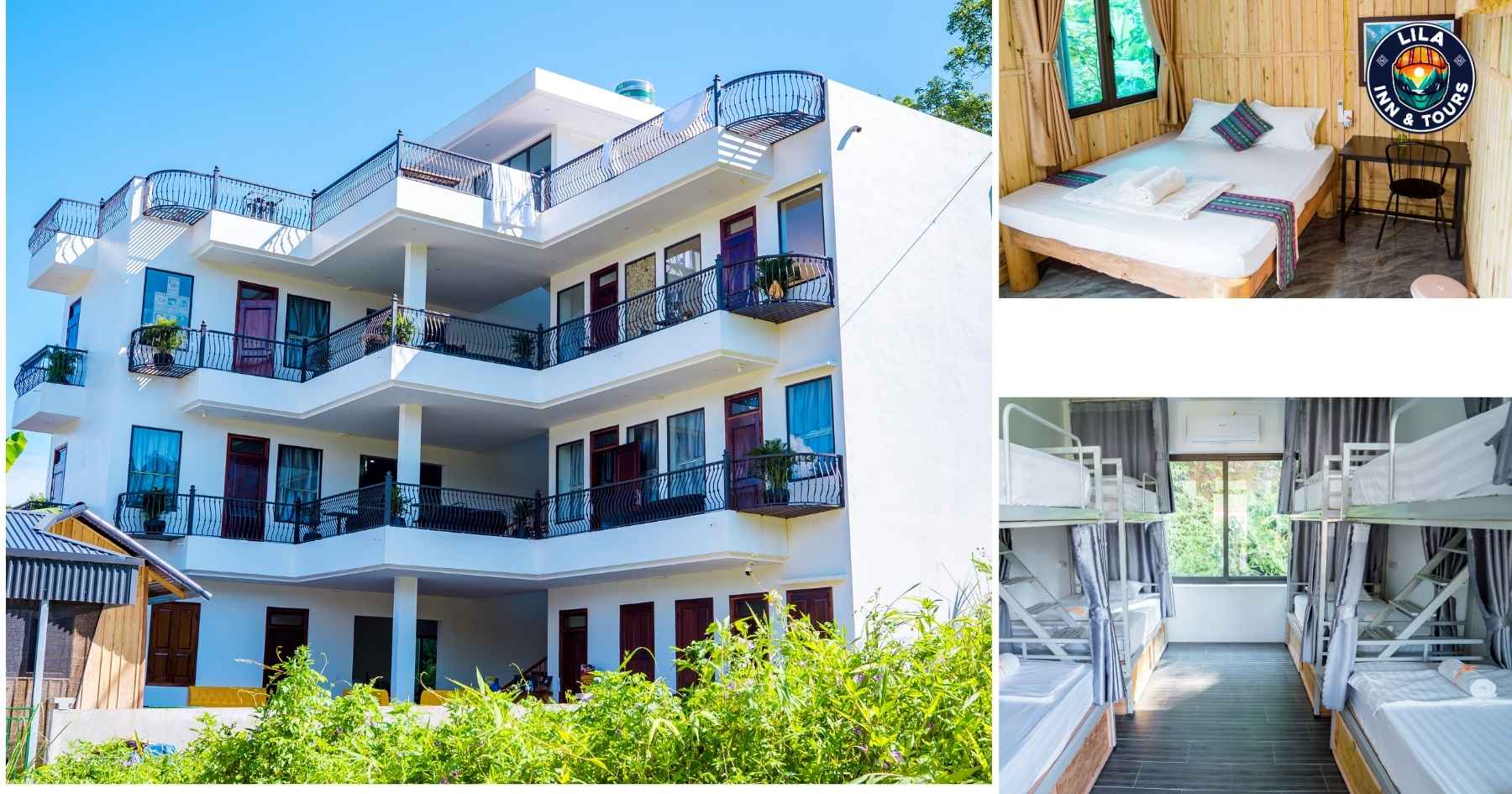
The first stop of the journey is Bac Sum Pass, which is called “the gateway to the Ha Giang Loop”. This winding mountain road resembles a giant snake, offering exciting turns and expansive views of rice terraces and valleys. You might feel amazed by its twists and turns, but calm down, it is just a “teaser” to what’s coming ahead.
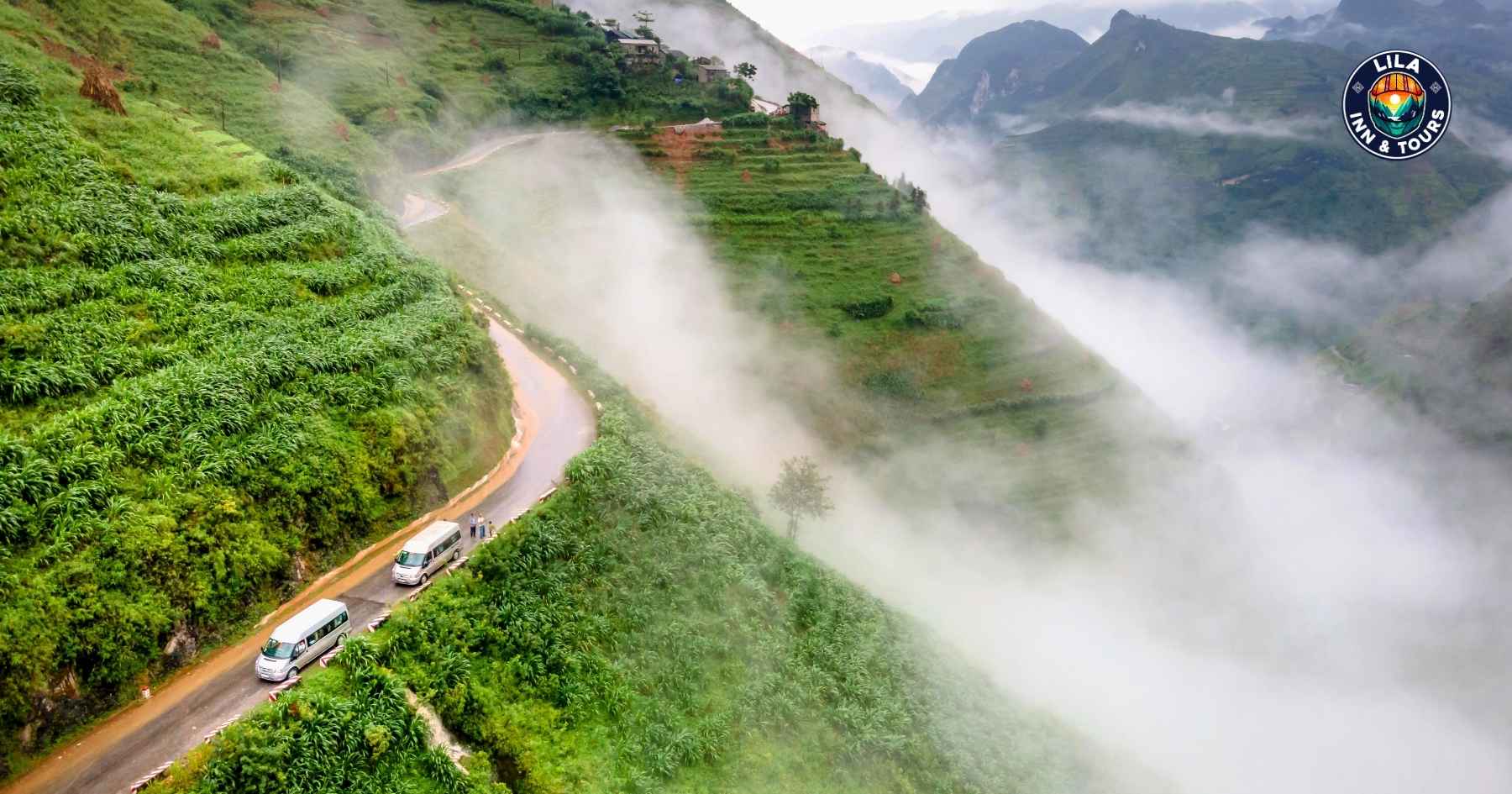
Following Bac Sum Pass is Khau Lan Waterfall, a peaceful and hidden spot in the tropical forest. Cool air and fresh water allow you to enjoy a short retreat in nature.
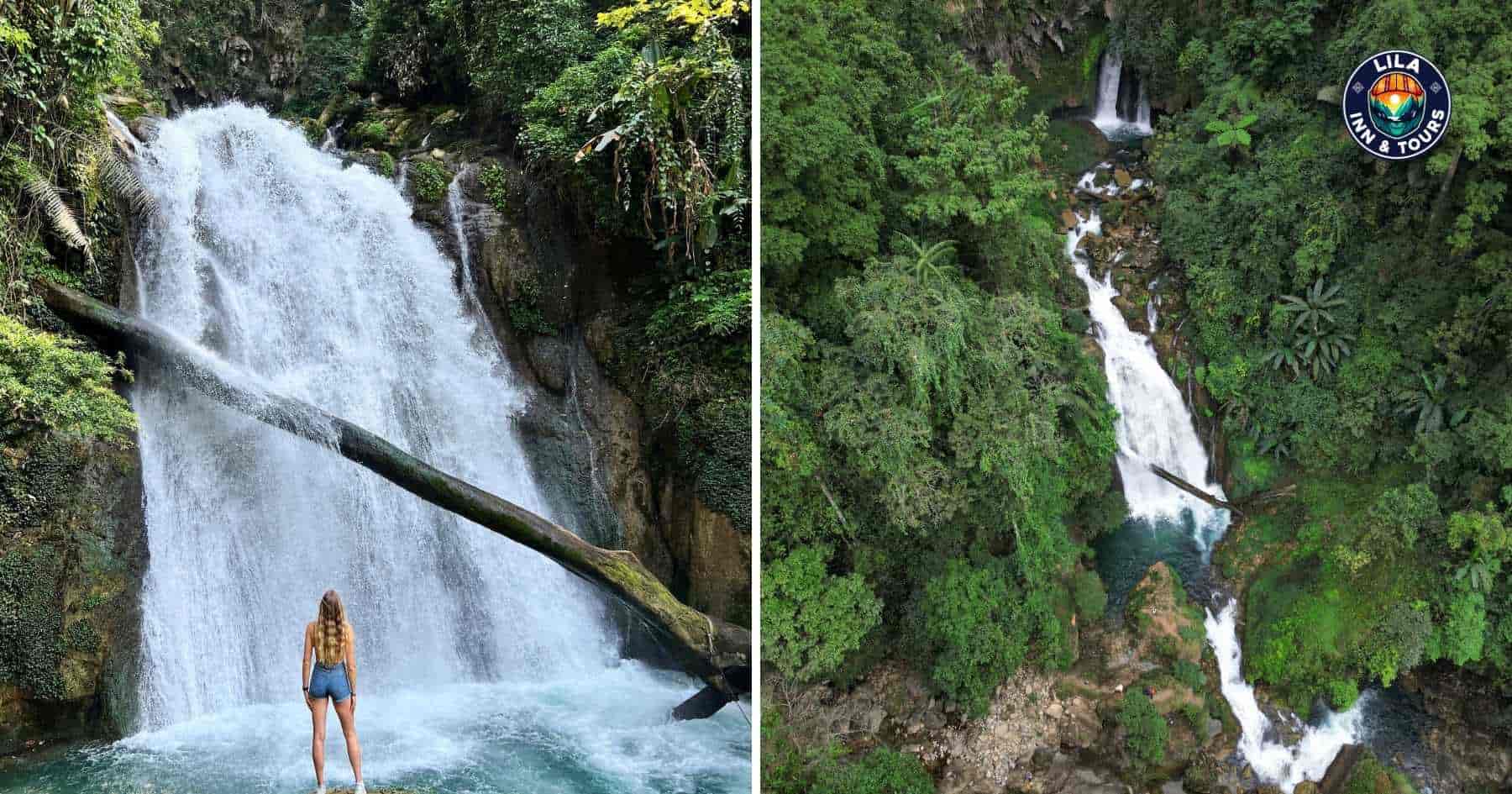
Continuing onward, you’ll reach the iconic Quan Ba Heaven Gate, one of the five most beautiful “heaven gates” in Vietnam. From here, you can get a stunning view of Tam Son Town and the famous Twin Mountains.
After that, lunch will be served at a local restaurant in Quan Ba town, where you can enjoy some of Ha Giang’s traditional dishes such as Thang Co, Sour Pho, Au Tau Porridge, …
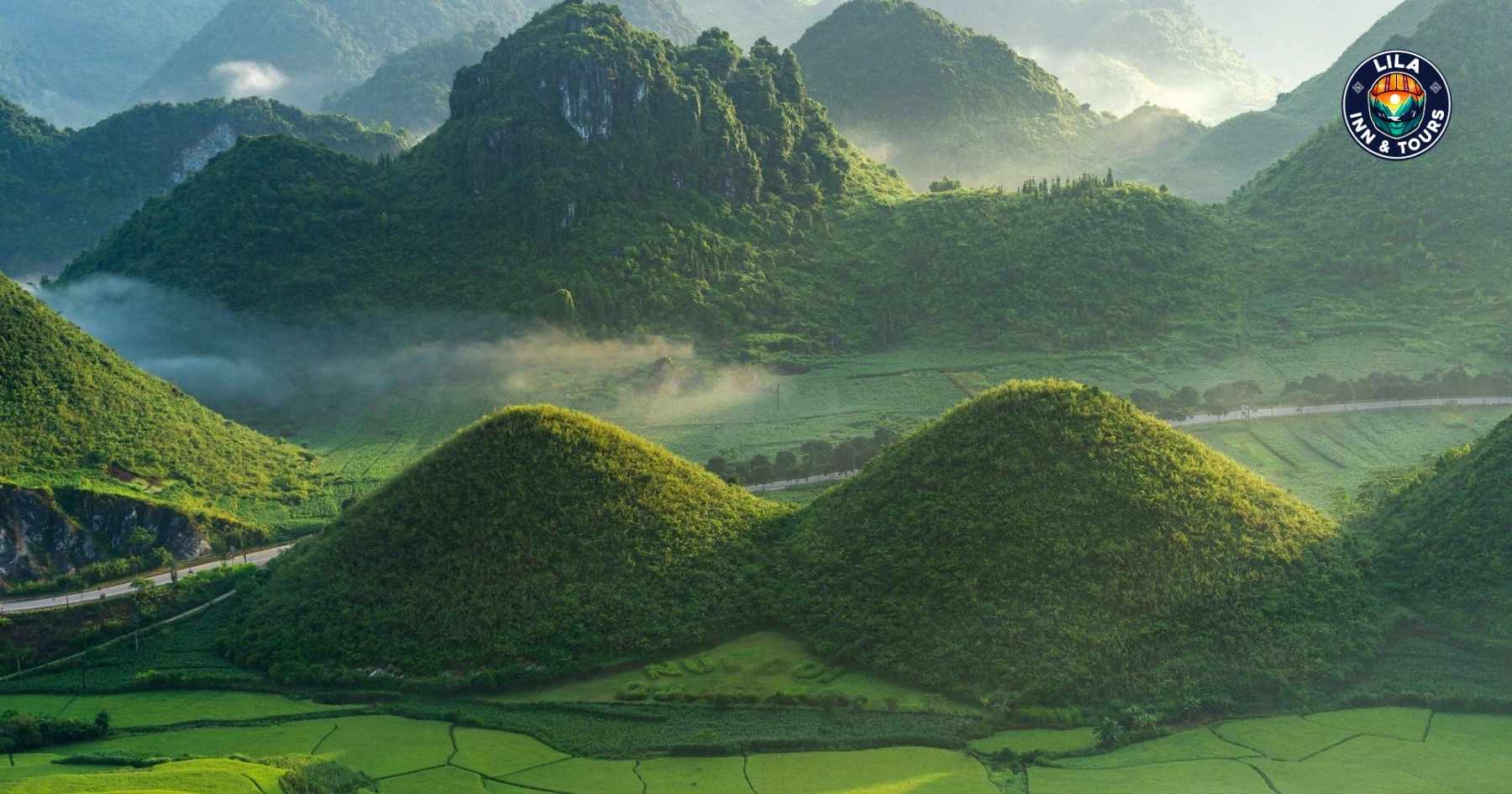
The journey continues to Nam Dam Village, the home of the Red Dao people, famous for its traditional rammed earth houses. Here, you can learn about local life and customs, join in folk games, or even try a herbal bath made from forest plants.
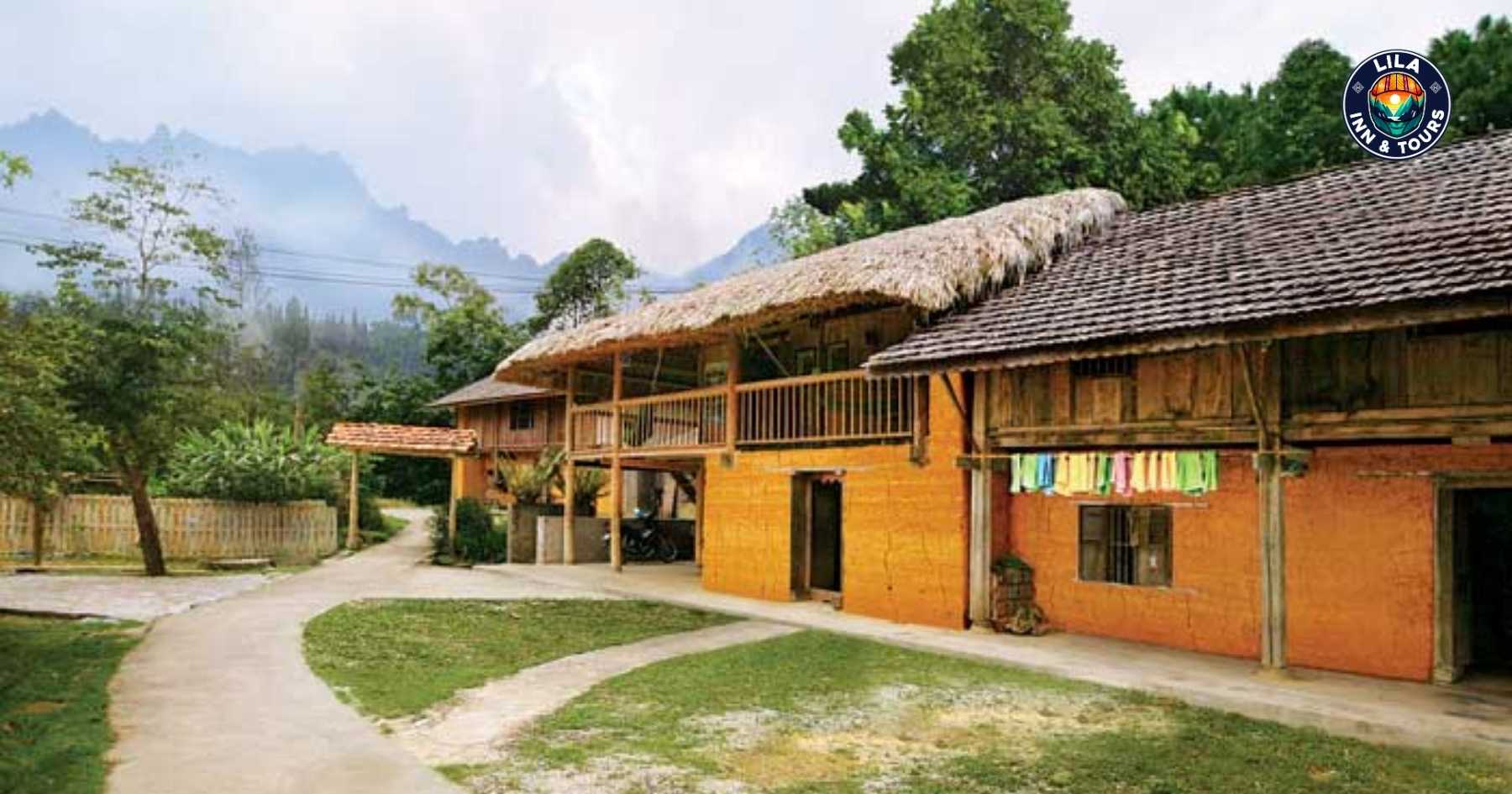
In the afternoon, the route takes you to a Linen Weaving Village run by H’mong women. It is a great chance to see how hemp plants are turned into beautiful fabrics and pick up a handmade souvenir.
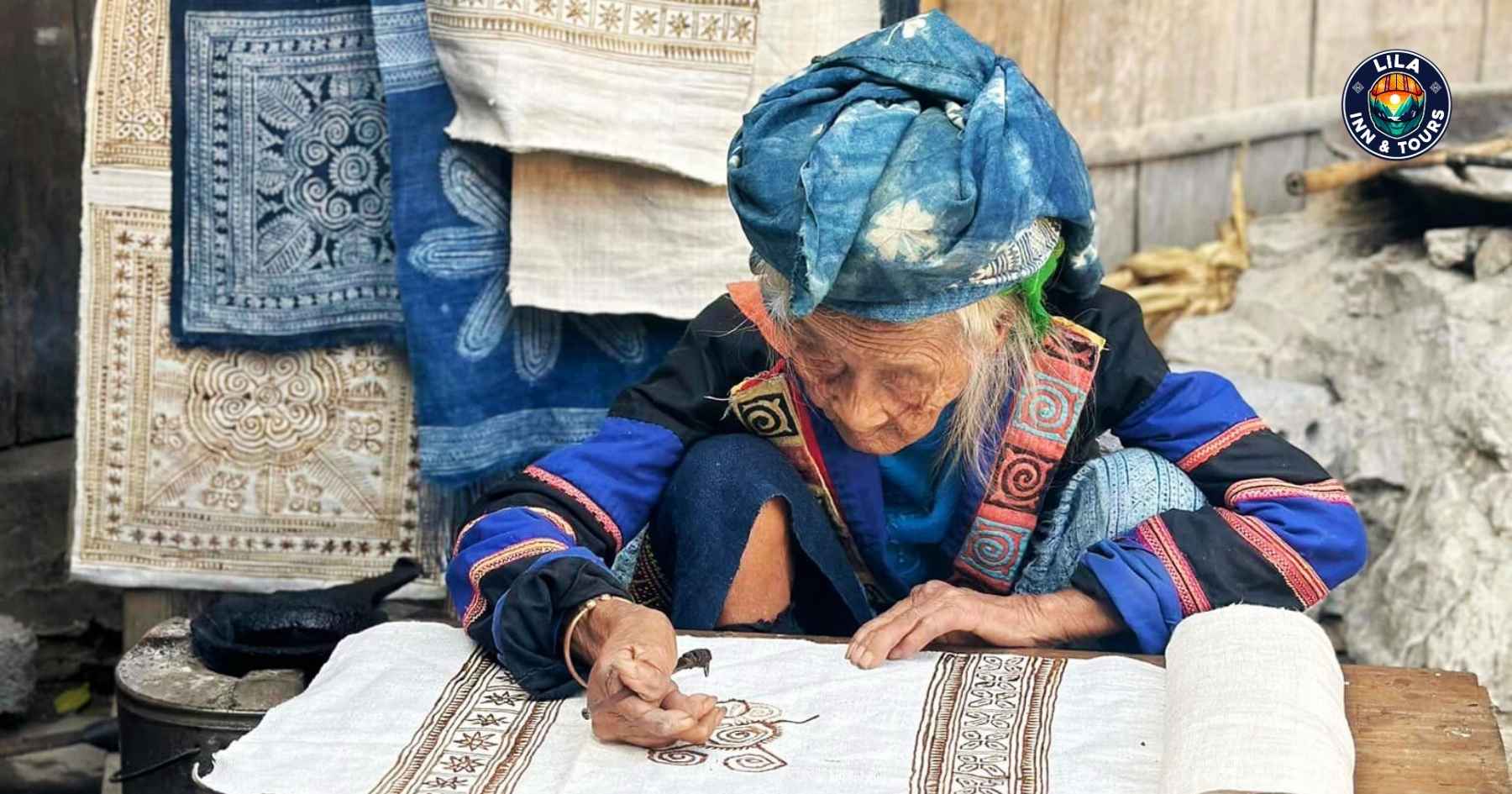
Before ending the day, you will reach two final scenic stops: Can Ty Viewpoint and Lao Va Chai Terraces. These peaceful places allow you to take in the mountain scenery and possibly catch a sunset.
Day 1 of the Ha Giang Loop tour will end at Yen Minh town.
Wondering where you’ll stay? Lila has it ready for you.
We have arranged a cozy homestay at Yen Minh, which is a welcoming place for you to rest and recharge. As evening falls, you’ll gather for a warm family dinner with some local cuisine such as grilled pork with mac khen (wild pepper), stir-fried mountain greens, and a shot of corn wine.
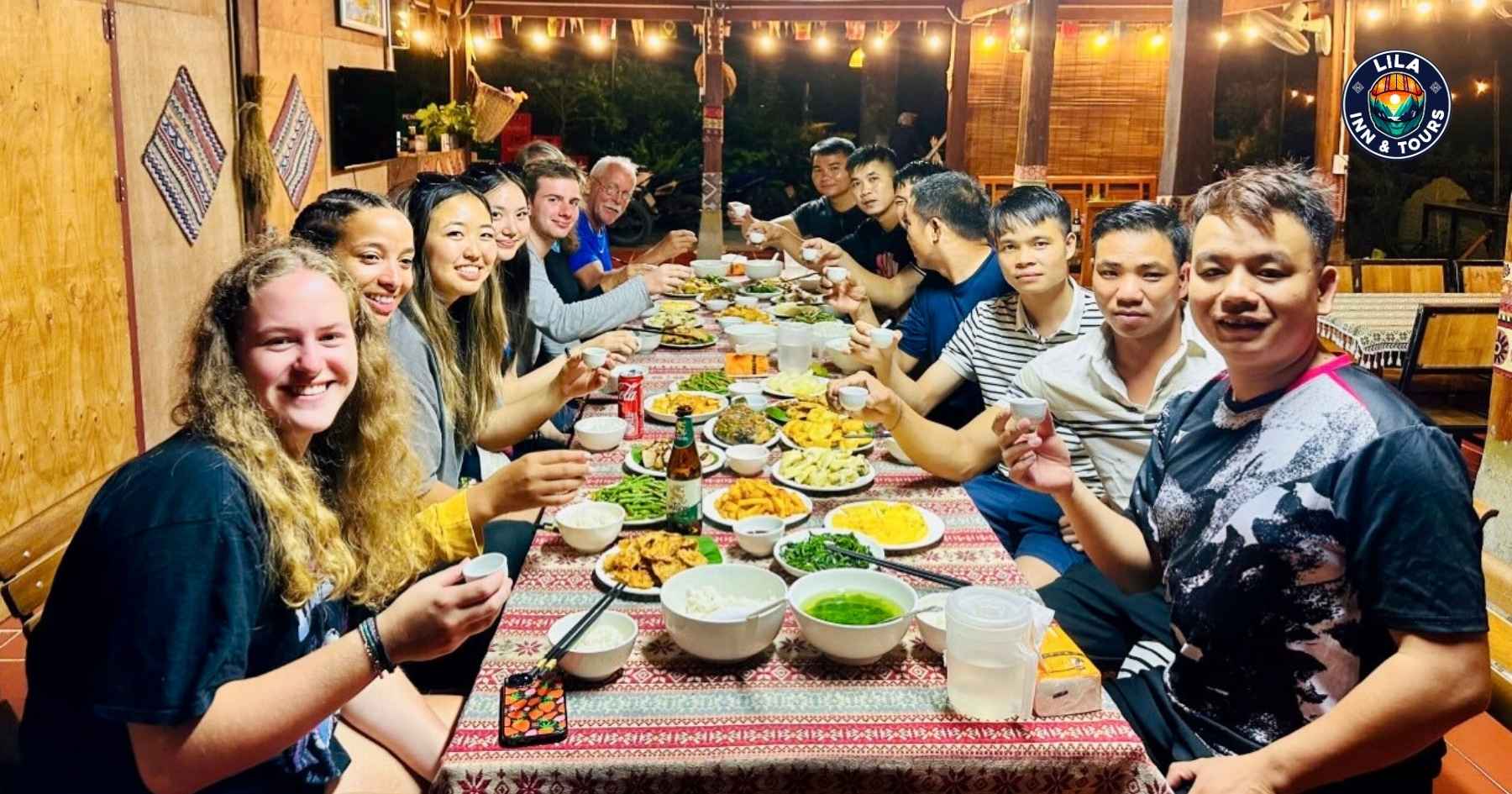
Day 2: Yen Minh – Dong Van
Quick Summary:
- Starts: 8:00 AM at Yen Minh District
- Ends: around 4:30 PM at Dong Van Town
- Total distance: approximately 115 km
- Highlight stops: Tham Ma Pass, Nine-Turn Pass, Pho Cao Valley, Lao Xa Village, Hmong King’s Palace, Sa Phin, Lo Lo Chai Village, Vietnam-China Border, Northernmost Point of Vietnam, Ma Le Village, Khe Lia Viewpoint, Thien Huong Village, Dong Van Ancient Town.
Day 2 of the Ha Giang Loop tour starts at 8:00 AM, with Tham Ma Pass as the first stop.
This legendary road is famous for its sharp curves and dramatic bends, and was once used to test the strength and endurance of horses. Buyers and sellers stood above, observing and bidding for better prices for the stronger horses. Not just offering a real sense of adventure, the winding shape of the pass makes it one of the most favorite check-in spots on the Ha Giang Loop.

After Tham Ma Pass, you’ll take on the next challenging road: the Nine-Turn Pass. As you can guess from its name, this road features nine sharp curves twisting like a spiral, making it a real test of patience and riding skills. But the reward for you is worthy: from the top, you can take in the peaceful beauty of Pho Cao Valley, with quiet villages and green terraced fields.
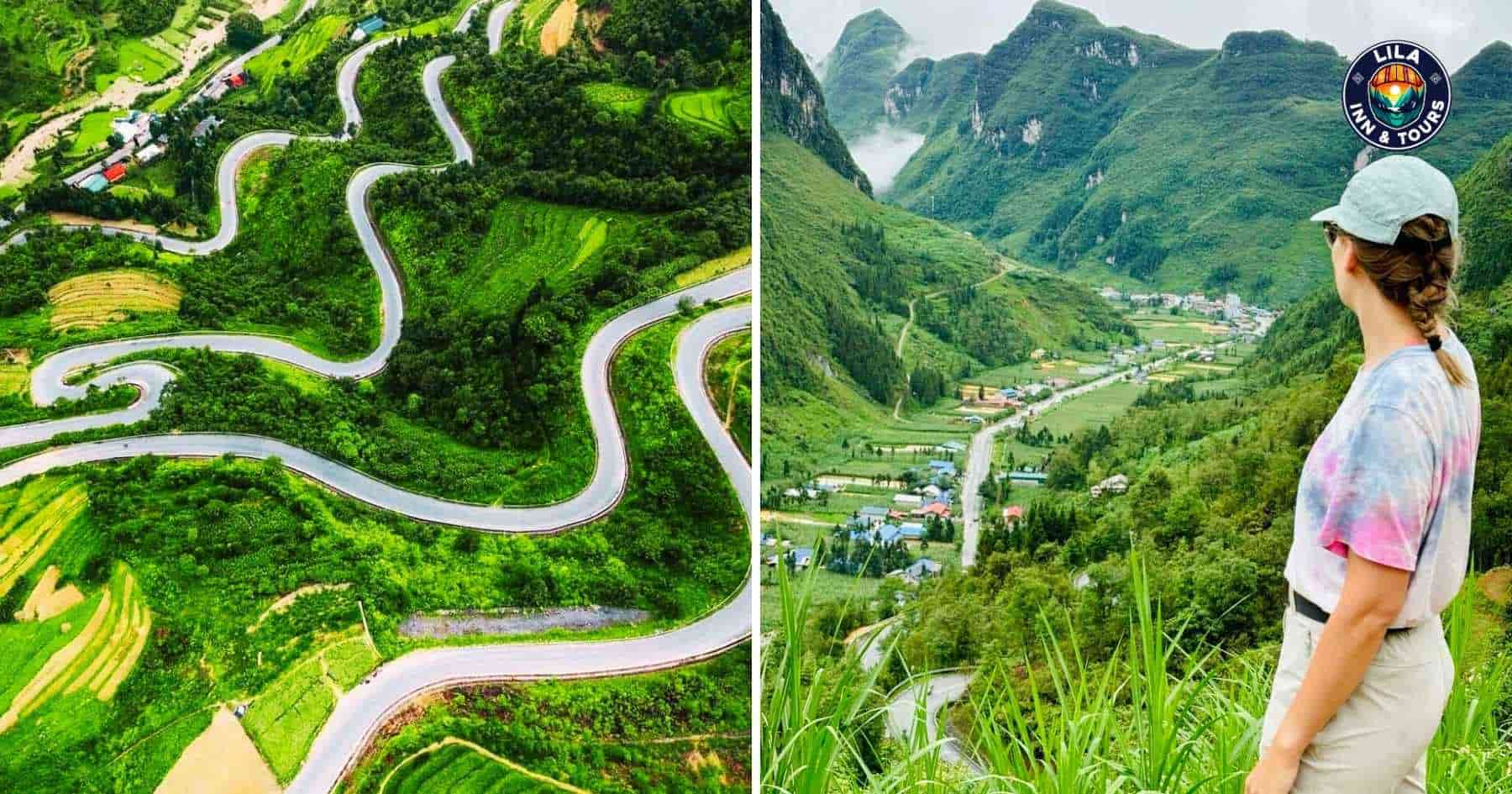
Next, you’ll visit Lao Xa Village, where about 70 H’mong families live. The village is famous for its old clay houses, some built hundreds of years ago. Locals are also known for making silver jewelry and traditional H’mong panpipes by hand.
One of the highlights of Day 2 is the H’Mong King Palace, the historical landmark that tells the story of a powerful H’Mong family in the early 20th century. Take your time to explore its unique architecture, which blends traditional Hmong styles with influences from Chinese and French colonial designs. It’s a cultural beauty that you should not miss on your Ha Giang Loop journey.
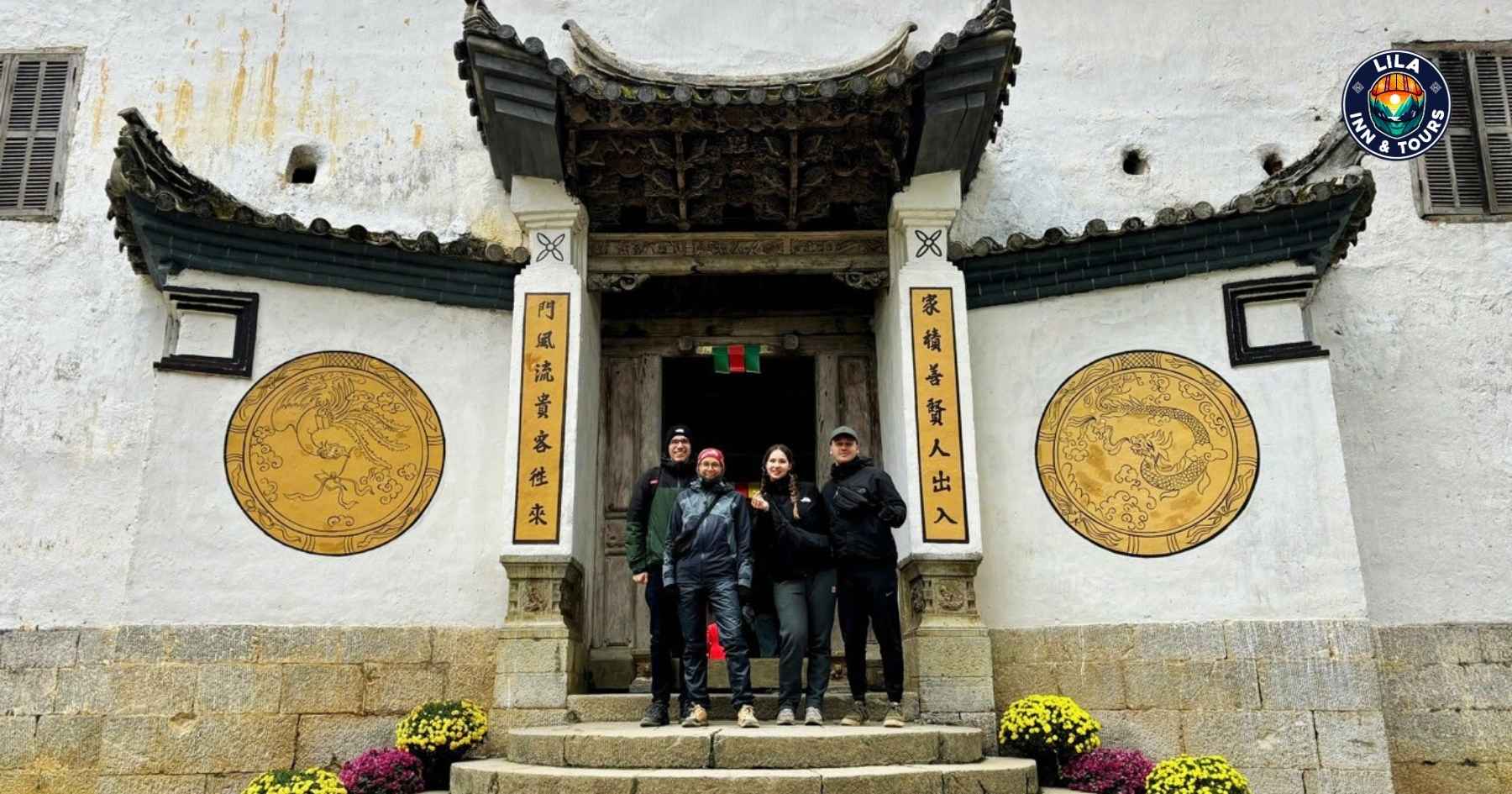
At noon, you will have lunch in Sa Phin before heading to the next destination: Lo Lo Chai Village.
Lo Lo Chai Village is a small, peaceful village located right at the foot of Lung Cu Flag Tower – the northernmost point of Vietnam. This is the home of the Lo Lo ethnic minority, standing out with its traditional Lo Lo houses, rich cultural heritage, and warm, friendly community. From this place, you can even check in with the iconic Lung Cu Flag Tower in the background.
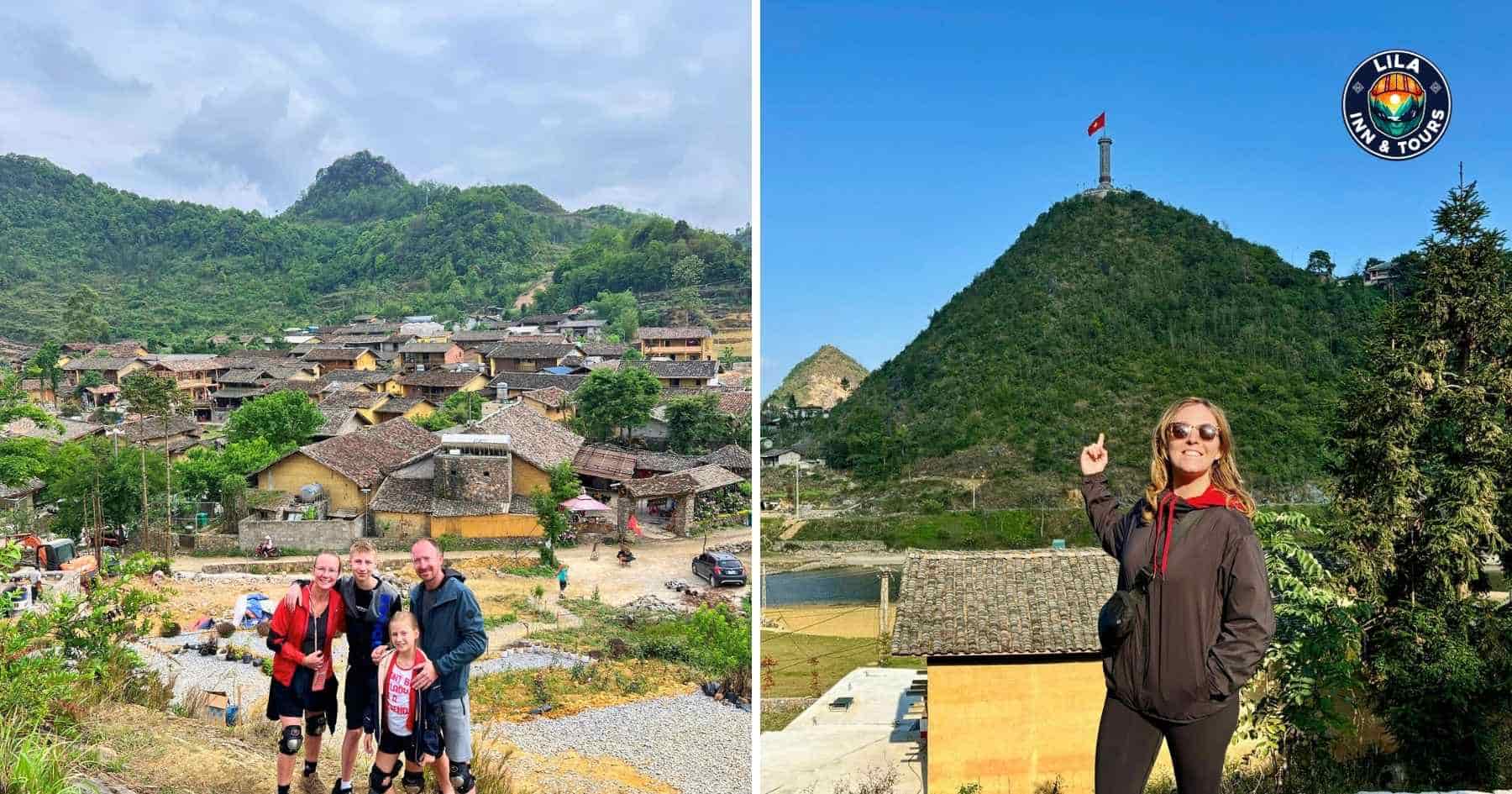
The journey then takes you to three scenic spots in turn: the Vietnam-China border, the ancient village of Ma Le, and the peaceful Khe Lia Viewpoint. Each stop offers a unique beauty of nature and culture to discover.
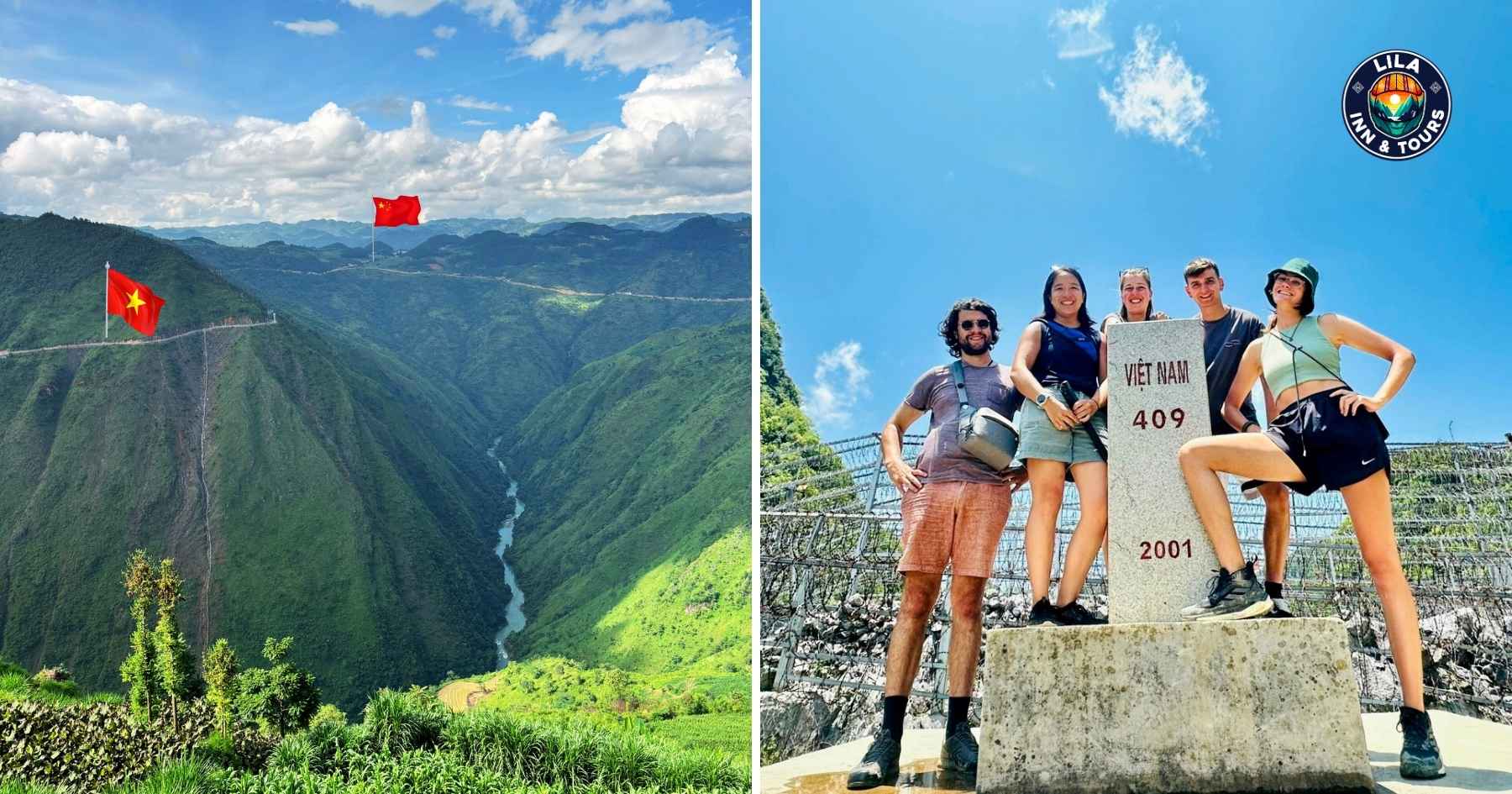
On the last route, you’ll stop at Thien Huong Village, an old community hidden in the forest, to visit the famous 100-year-old banyan tree.
The famous 100-year-old banyan tree attracts many tourists coming to visit
Finally, the day tour ends at around 4:40 PM in Dong Van Ancient Town. And just like on Day 1, your evening is already thoughtfully planned by Lila. After checking into a cozy homestay, you will have dinner filled with food, sharing stories, and enjoying music.
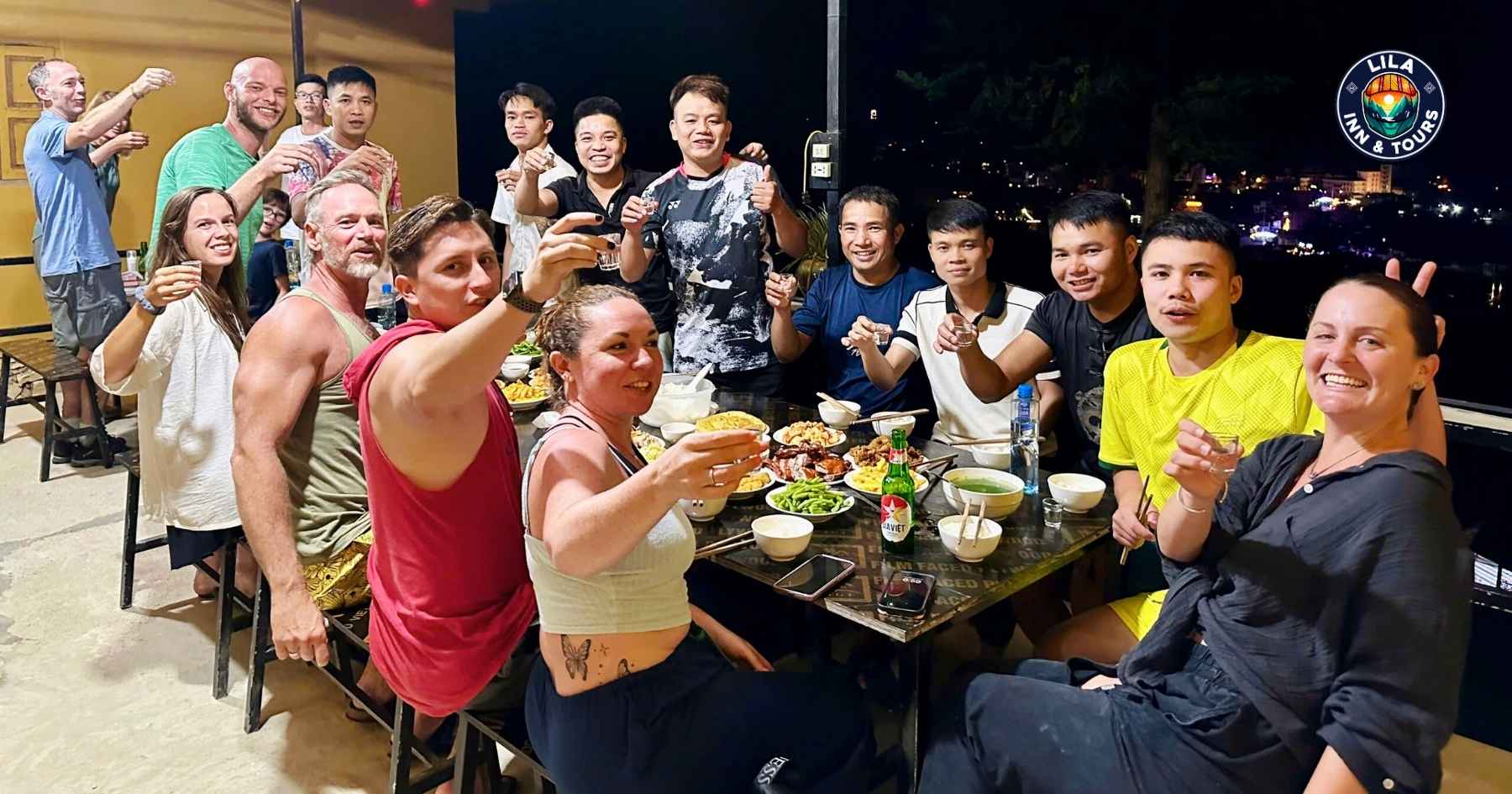
Day 3: Dong Van – Meo Vac – Ha Giang City
Quick Summary:
– Starts: 8:00 AM at Dong Van town
– Ends: around 4:30 PM at Ha Giang city
– Total distance: approximately 150 km
– Highlight stops: Dong Van Ethnic Market, Ma Pi Leng Pass, White Cliff, Nho Que River, M-shaped Pass, Mau Due Village, Duong Thuong Valley, A Boong Waterfall.
Your third morning begins at Dong Van Ethnic Market, a lively gathering spot that takes place every Sunday morning. You can witness the cultural diversity of Ha Giang in their traditional costumes, food, and in every good sold at the market. Don’t forget to pick up some handmade crafts as a memorable souvenir.
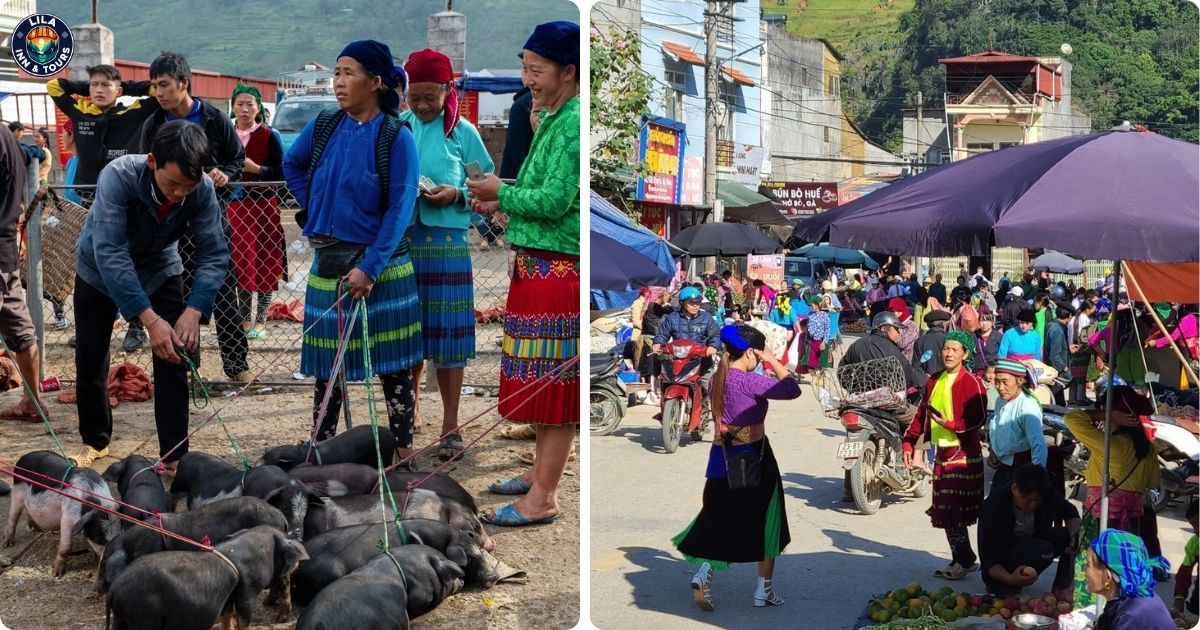
The highlight of the day comes afterward when you arrive at the “King of Passes” in Vietnam: Ma Pi Leng Pass.
Stretching around 20 kilometers between Dong Van and Meo Vac, this route challenges even the most experienced driver with its steep cliffs and sharp, narrow curves. However, every twist and turn then rewards you with breathtaking views that are rarely seen anywhere else in the country.
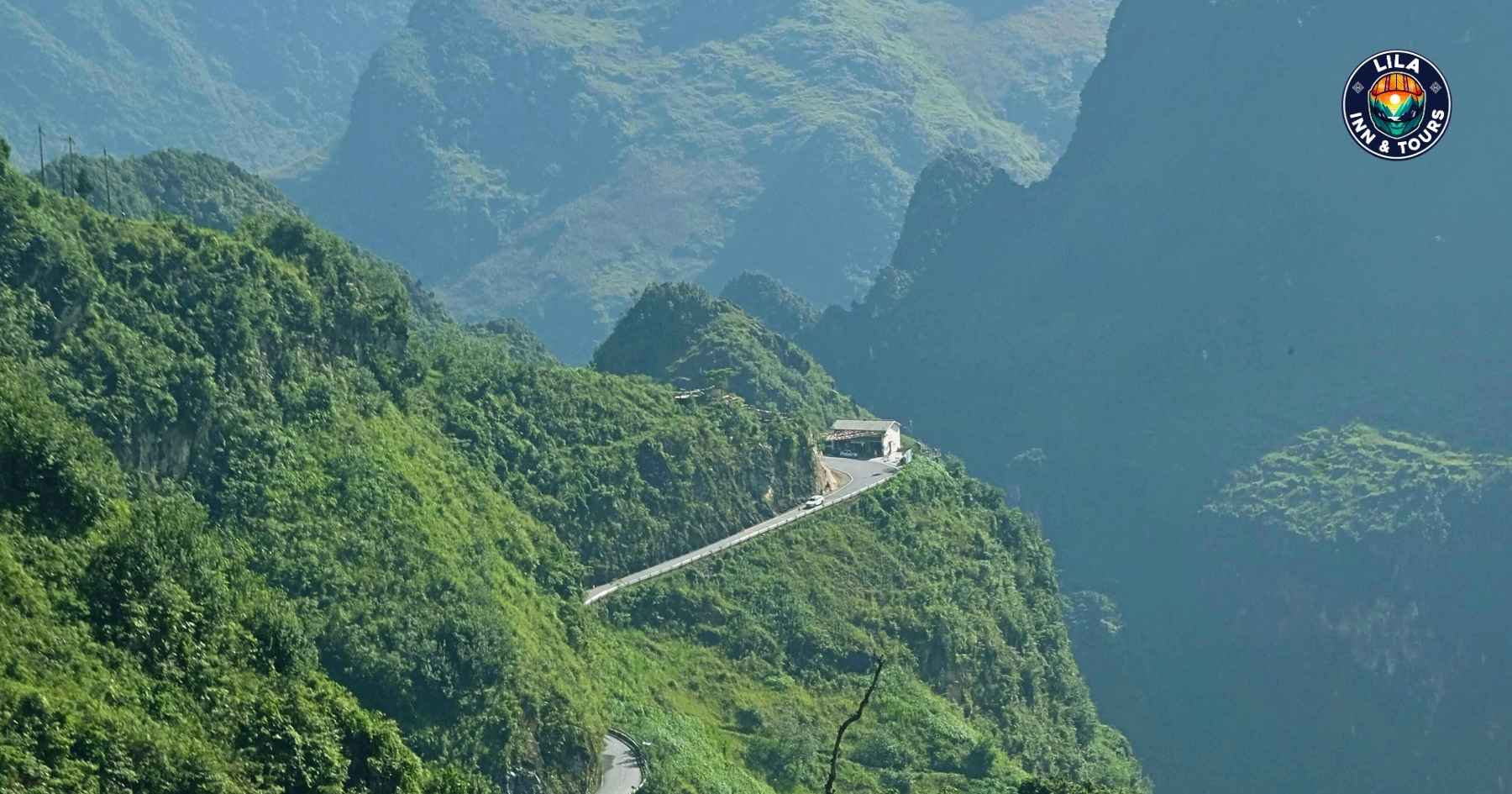
While passing through Ma Pi Leng Pass, travelers have two options: hiking 5 km to the panoramic White Cliff or heading down to the emerald Nho Que River. While the White Cliff offers sweeping mountain views from above, the river route lets you enjoy a peaceful boat ride through Tu San Canyon, which is the deepest canyon in Southeast Asia.
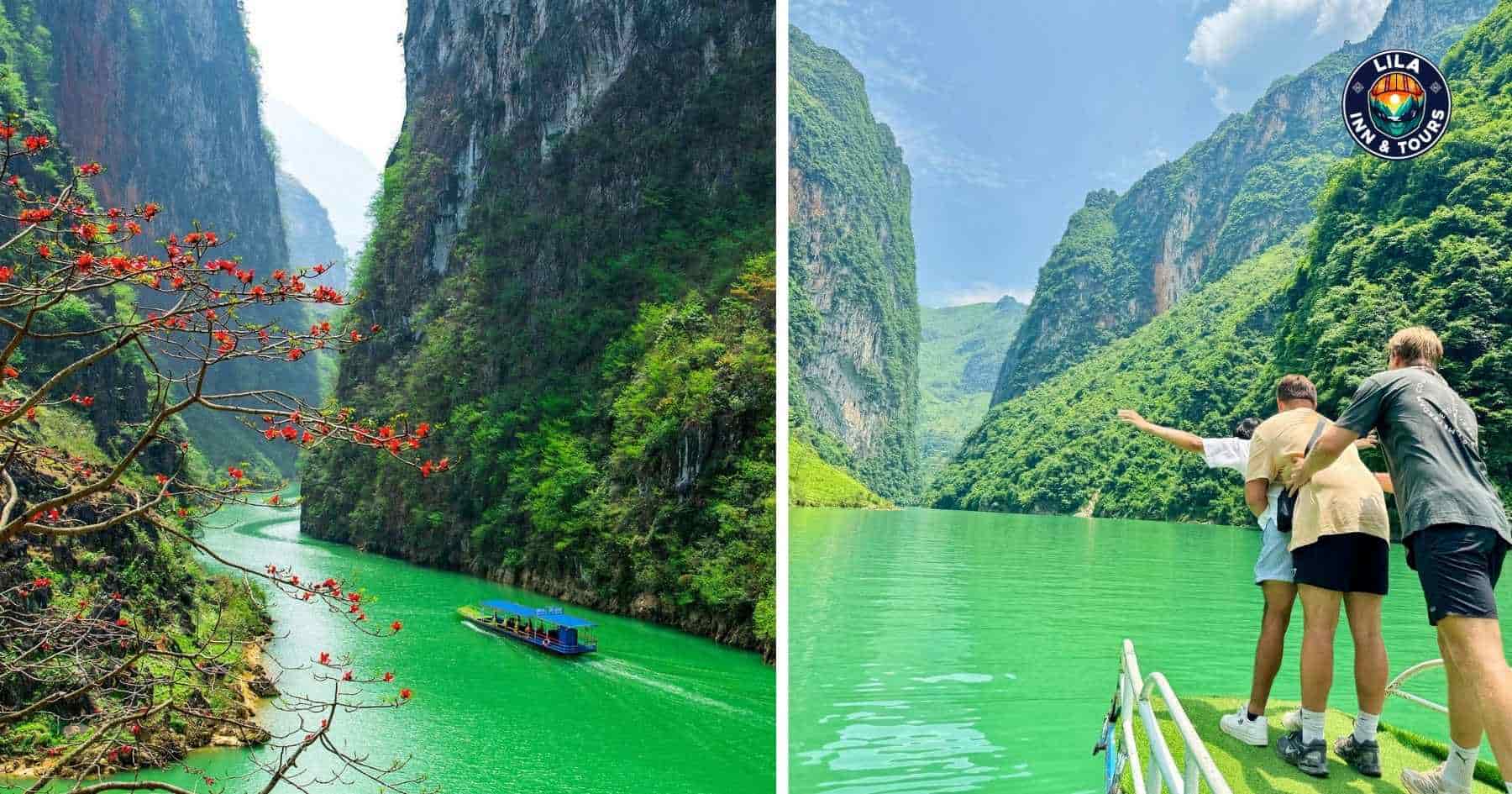
Riding a boat on the Nho Que River is one of the favorite experiences on the Ha Giang Loop
As the ride continues, you’ll reach another well-known road called the M-shaped Pass. Though not as challenging as Ma Pi Leng, this pass has its charm with the zig-zag shape and dramatic curves.
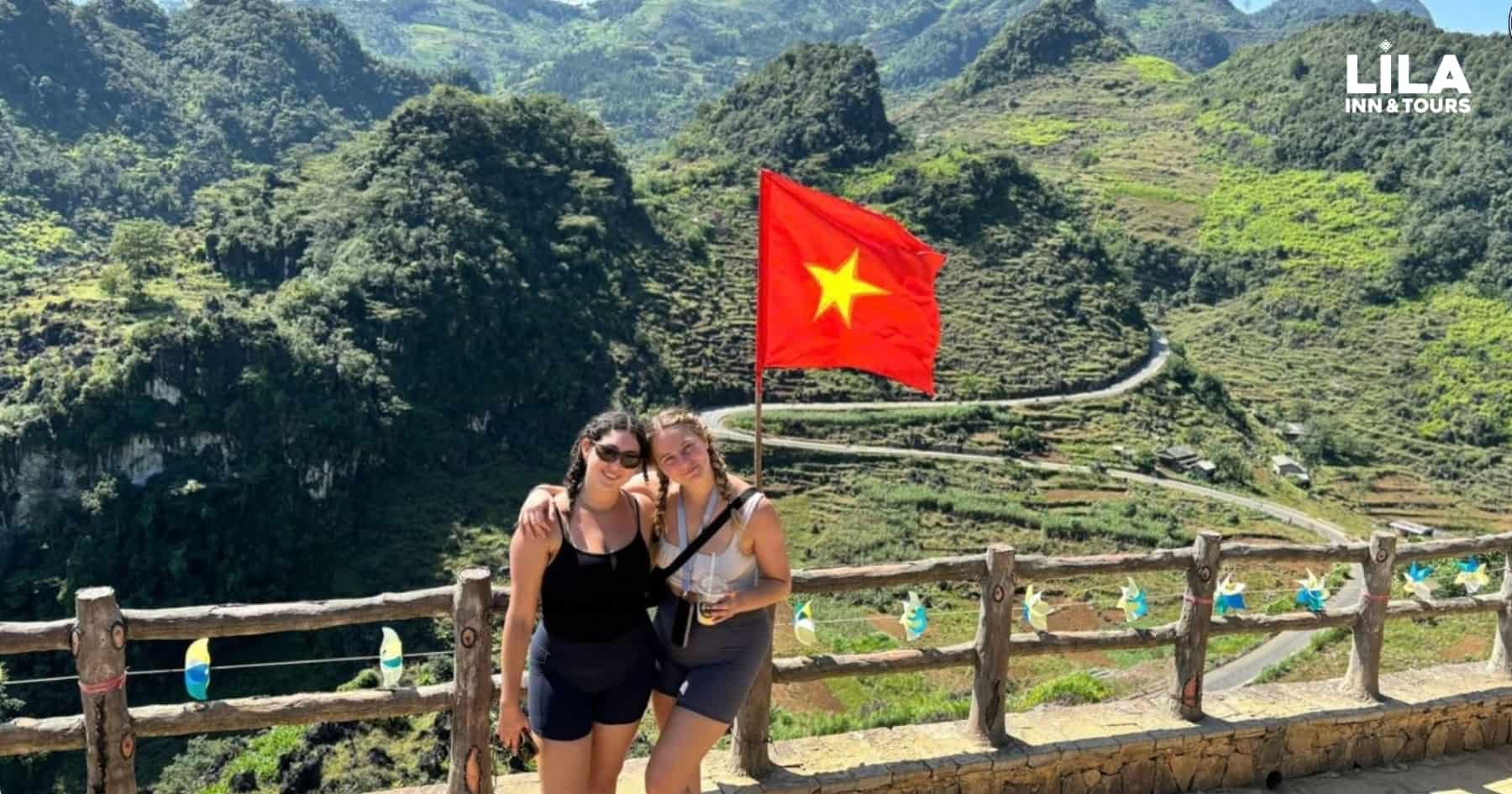
When arriving in Mau Due Village, you’ll stop for lunch and enjoy a short break.
In the afternoon, the tour leads you to Duong Thuong Valley, a tranquil place surrounded by towering limestone peaks.
Not far from there is A Boong Waterfall, a hidden gem tucked away in the jungle. Its cool, clear waters form a natural pool where you can relax and soak in the refreshing mountain air.
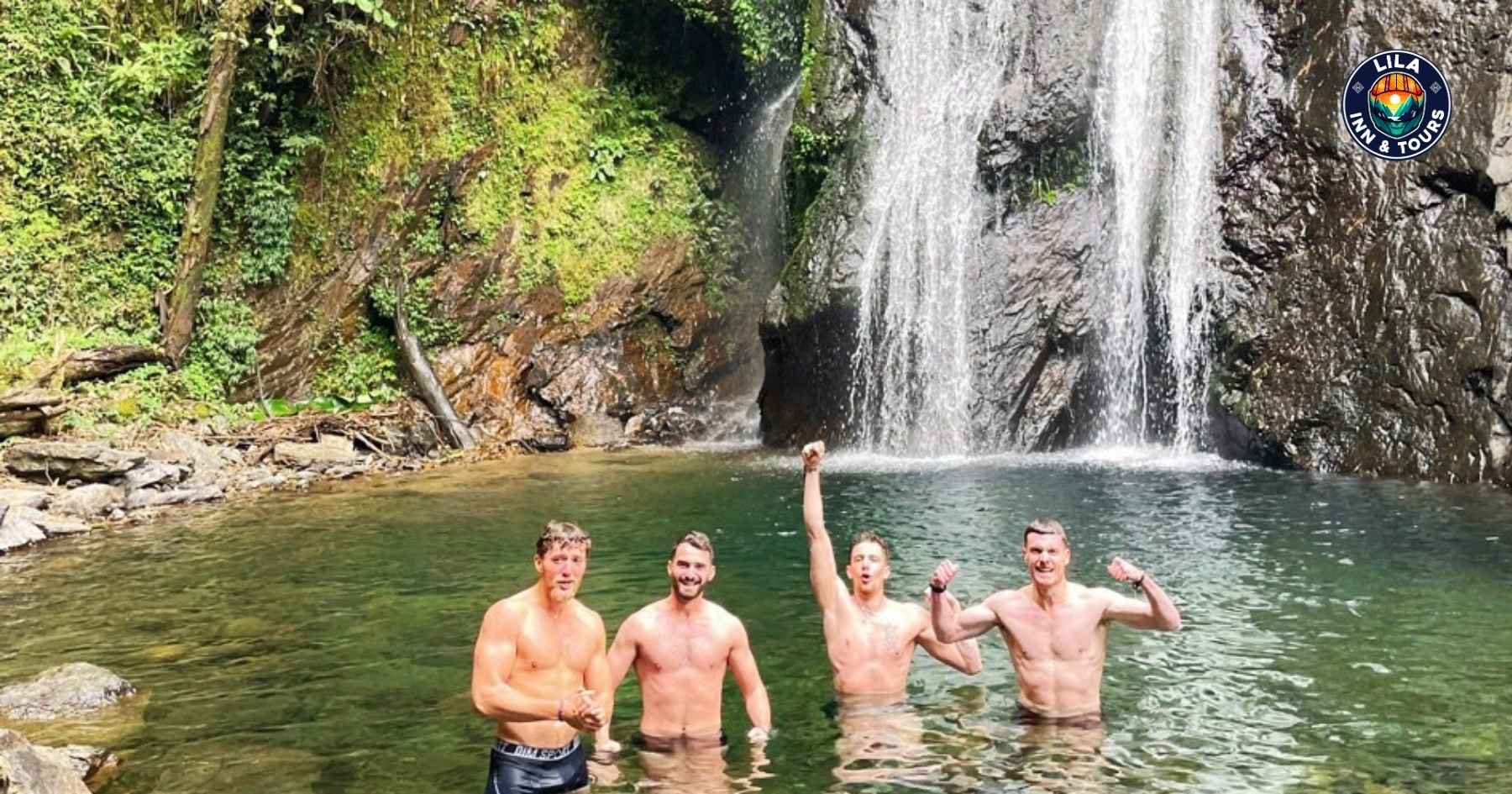
Saying goodbye to the waterfall, you will return straight to Ha Giang City to complete your adventure. The tour will end at around 5:00 PM.
This 3-day itinerary is proudly brought to you by Lila Inn & Tours, your local tour operator with 8 years of experience in Ha Giang Loop adventure. If you’re looking for a tour agent who handles every detail so you can focus on enjoying the journey, Lila is your perfect choice.
With a strong commitment to safety, small group experiences, and off-the-beaten-path exploration, we’re here to make your Ha Giang journey truly unforgettable.
>>> Explore the full 3-day itinerary in our detailed Ha Giang Loop Tour guide.
How to do the Ha Giang Loop?
To do the Ha Giang Loop, you’ll first need to get to Ha Giang City. Many travelers feel unsure about how to reach Ha Giang, especially when traveling through multiple provinces in Vietnam. However, you don’t need to worry that much because there’s always a bus option to take you to Ha Giang, no matter where you are.
Lila is always happy to assist with booking your bus tickets and giving you helpful advice along the way. Contact us for any questions about booking a bus to Ha Giang: https://lilainn.tours/bus-booking/
From Ha Giang City, there are two main ways to explore the Loop: join a guided tour or ride it solo. Each option has its unique experience, so the choice will depend on your travel style, budget, and riding skills.
-
Joining a guided tour
- Easy Rider: An Easy Rider is an experienced local motorbike driver who takes you as a passenger on your tour. This option allows you to enjoy the scenery and cultural experiences without worrying about the challenging roads.
- Motorbike ride with a guide (an International Driving Permit – IDP is required): Driving your own bike while following a local guide. It is great for those who want some independence but still have support from the local people.
- Car Tour: A comfortable option that keeps you safe from any weather conditions. It is ideal for families, couples, or small groups who prefer a more relaxed way to enjoy the Ha Giang Loop.
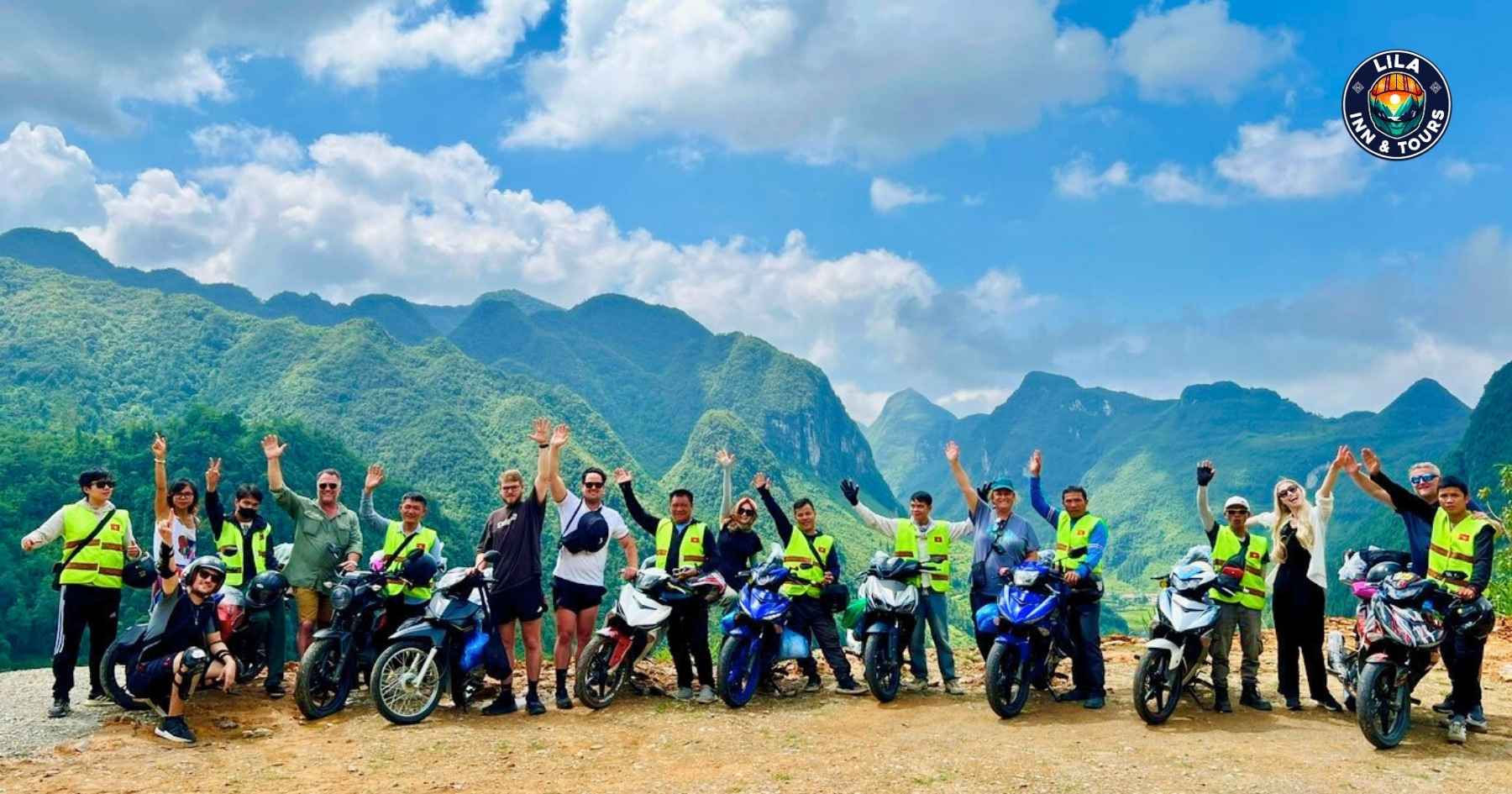
-
Motorbike rental
A solo trip is suited for confident riders who have a valid International Driving Permit (IDP). Though giving the most freedom to travelers, this option requires careful preparation and good riding skills to handle the difficult roads.
With over 8 years of experience as a local tour operator, we highly recommend going with an Easy Rider for a worry-free trip. Our drivers, each with over 5 years of experience, will take care of everything: safety, food, and accommodation, so you can just focus on enjoying the journey. Check out the Easy Rider Tour options at Lila.
If you still prefer to ride yourself, feel free to reach out to us for useful travel tips on how to ride safely in Ha Giang. We warmly welcome and support all travelers to explore our beautiful hometown.
Read our Full Guide to Motorbikes in Ha Giang to make sure you’re well-prepared for your solo trip.
How much does the Ha Giang Loop cost?
The cost of doing the Ha Giang Loop tour usually ranges from $152 to $350 for a 3 to 5-day trip.
Joining a motorbike tour with an Easy Rider is more convenient because it includes everything: motorbike, fuel, guide, meals, accommodation, and entrance fees. For the most popular 3-day 2-night (3D2N) Easy Rider tour, the average cost is around $152–164 USD per person.
Meanwhile, renting a motorbike and riding yourself is more saving. Motorbike rental usually costs around $6–20 per day. When you add other basic expenses like food, accommodation, and entrance fees, a self-riding tour package will typically cost you from $120 to $196, depending on the selected motorbike type.
>>> Explore our full Ha Giang Loop Cost Guide.
What to pack for the Ha Giang Loop?
When preparing for the Ha Giang Loop journey, you don’t need to pack too much. However, a few essential items can make your trip safer, more comfortable, and more enjoyable.
At Lila, we often get asked: “What are the must-bring items? We want to travel as light as possible”. That’s why we’ve put together this quick list of essentials to help you get ready.
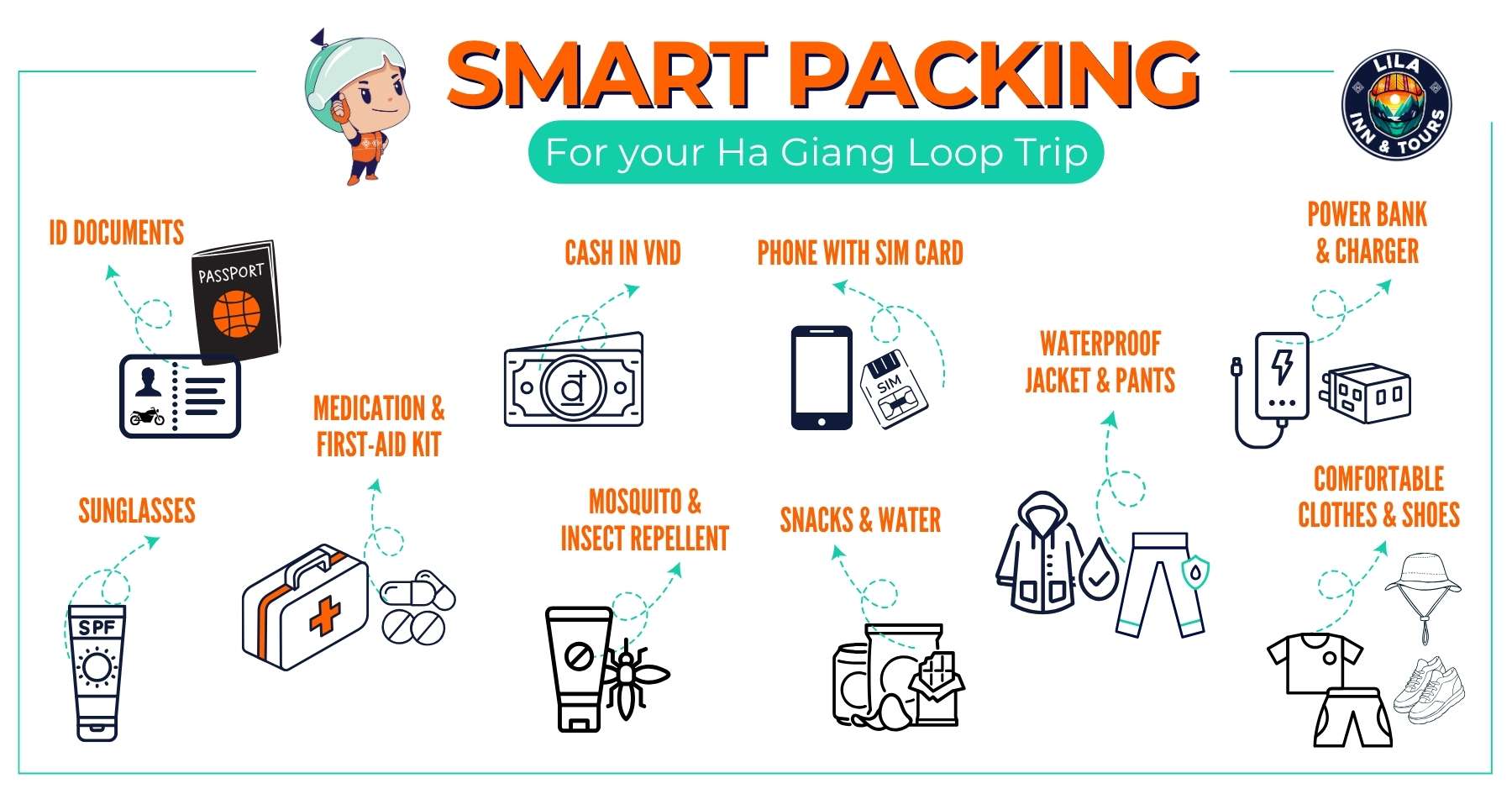
Here are 10 items that you shouldn’t leave behind before hitting the road:
- Passport & ID documents: including your passport, visa, and International Driving Permit if you’re riding on your own.
- Cash (VND): bring around 200,000–500,000 VND per day for personal expenses, as many places don’t accept cards.
- Phone with a data SIM card (Viettel or Vinaphone): Useful for navigation, staying in touch, and emergencies.
- Waterproof jacket & pants: Weather in the mountains can change quickly be ready for both sunshine and sudden rain.
- Power bank & travel power adapter: Some remote areas may not have electricity or suitable charging outlet for your devices.
- Sunscreen (SPF 50+): The sun is strong in the highlands and can burn your skin even if it’s not too.
- Personal medication & a small first-aid kit: Especially if you have allergies or specific medical needs.
- Mosquito & insect repellent: A must if you’re staying in villages or trekking in the forest.
- Snacks & water: Bring energy bars, chocolates, or dried food for quick energy on the go.
- Comfortable clothes & sturdy motorbike shoes: Choose breathable, flexible clothing and secure shoes suitable for mountain roads.
>>> Get a more detailed Ha Giang Loop Packing List
Practical tips for the Ha Giang Loop
Planning your Ha Giang Loop trip might feel overwhelming at first, so Lila’s here to help you. With our experience running tours, we’ve learned what’s truly important on the road. We’ve gathered our most practical tips to help make your trip smoother, safer, and more enjoyable:Check the weather before your trip: Roads can be slippery during the rainy season (July-August), so plan and pack carefully based on the weather forecast.
- Don’t overpack: Only bring essentials; heavy bags make riding harder and less safe.
- Start early each day: Riding after sunset is risky due to poor visibility, winding mountain roads, and the lack of streetlights.
- Fuel up whenever you can: Some sections of the Ha Giang Loop, especially in remote or mountainous areas, have very few gas stations, so it’s important to refill whenever you have the chance.
- Always wear protective gears: A proper helmet, long sleeves, and sturdy shoes help protect you from the sun, wind, and unexpected road conditions.
- Download offline maps: The Phone signal is weak in many areas. Apps like Maps.me or offline Google Maps will help with navigation.
- Carry enough cash: There are no ATMs in smaller towns like rural villages, and some places don’t accept cards.
Ha Giang Loop package with Lila
Lila Inn & Tours has built over the past 8 years as a local-rooted tour company that puts safety first, keeps groups small, and takes you off the beaten path for authentic experiences.
We like to ask our travelers why they ride with us. Zoe from Belgium, for example, summed it up: “Small, safe and out of the crowd, that is exactly why we lived our adventure with you and we loved it!”.
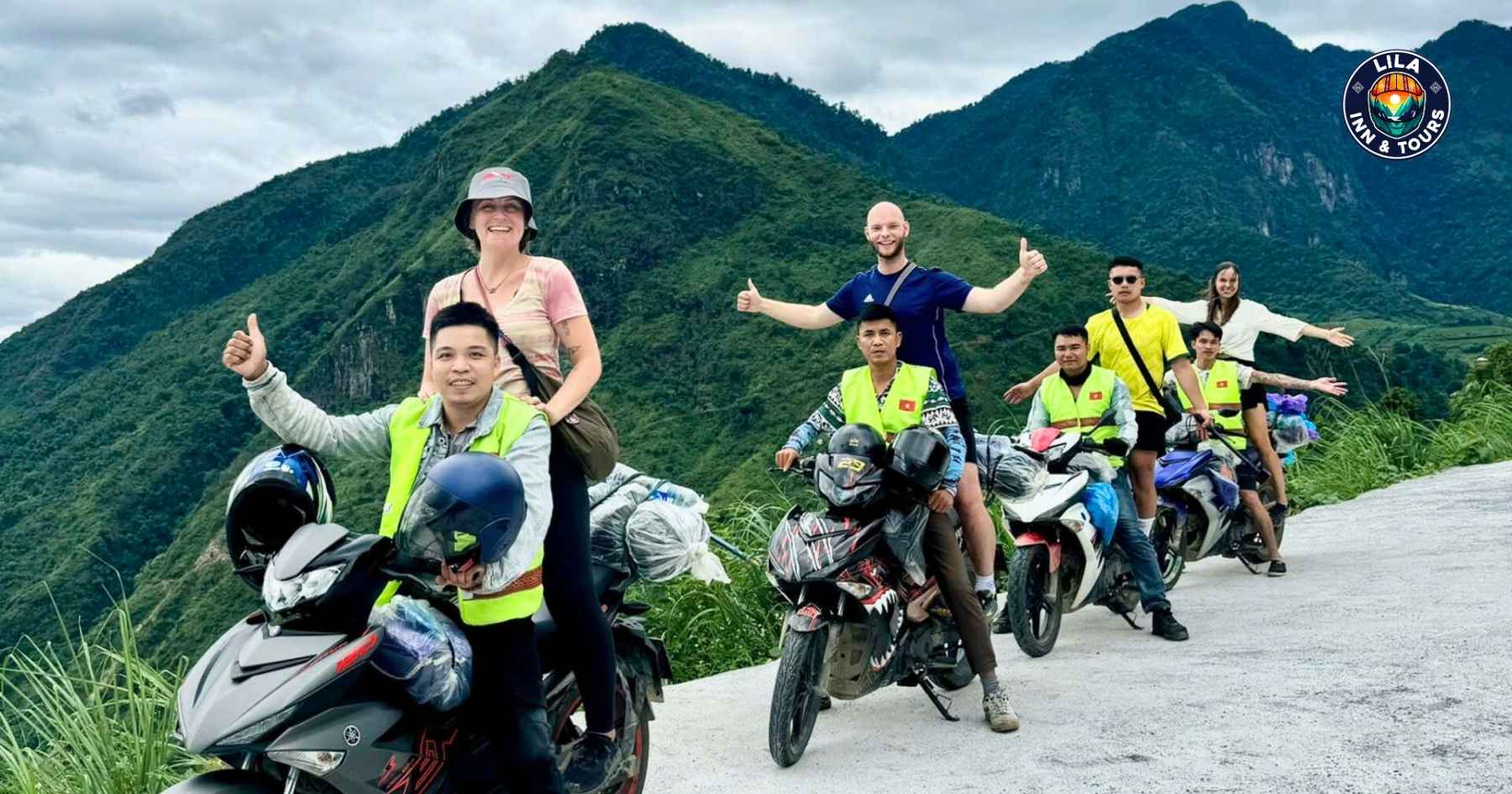
What makes our tour unique?
- Safety First: Our easy riders are professionally trained with over 5 years of hands-on experience on nearly every route across Ha Giang.
- Off-the-beaten-path: Explore famous destinations and hidden off-road gems.
- Small Group & Private Tours: Shared group tours (below 10 pax) and private tours at the same price.
If you are looking for a meaningful and affordable way to explore Ha Giang, check out Ha Giang Loop tours at Lila Inn.
FAQs
How difficult is the Ha Giang loop?
While experienced riders may find it manageable, beginners or those uncomfortable with motorbike riding in mountainous areas should consider alternatives like guided tours or being a passenger.
Is 3 or 4 days better for the Ha Giang Loop?
A 3-day Ha Giang Loop is generally ideal for travelers who want a full experience without feeling rushed. If you have more time, 4 days allows for a slower pace and deeper cultural immersion.
Is Ha Giang Loop worth it?
Absolutely. The Ha Giang Loop is a must for adventurous travelers seeking epic mountain views and authentic cultural experiences in Vietnam.
Conclusion
The Ha Giang Loop is a circular route, but the experiences never repeat. Every turn brings new views, stories, and moments.
What we’ve shared here can’t fully capture its beauty. Only when you’re standing among the towering mountains and endless skies will you truly understand what it means to get lost in the middle of the unreal beauty.
Lila Inn & Tours is here to support you—planning your route, booking buses, renting bikes, or joining a guided tour. Just reach out when you’re ready.
Website: https://lilainn.tours/
Email: lilainntours@gmail.com
Hotline/ Whatsapp: +84 968 321 715
Social Media:
- Instagram: https://.instagram.com/lilainn.tours/
- Tiktok: https://www.tiktok.com/@lilainn_tours
- Facebook: https://www.facebook.com/lilainnandtours

